
Loving lapwings
— How wild is your garden?
— Bringing nature back to the West Pennine Moors


Loving lapwings
— How wild is your garden?
— Bringing nature back to the West Pennine Moors
Patrons
Edwin Booth
Honorary Vice President
Baroness Williams of Trafford
Vice President
Ted Jackson MBE
Chairman Julian Jackson
Vice Chair
Hazel Ryan
Honorary Treasurer
Nicholas Williams
Chief Executive
Tom Burditt
Director of Conservation
Tim Mitcham
Director of Development
Mick Weston
Director of Nature and Wellbeing
Daveen Wallis
Director of Finance
Steve Wood
Editors Jenny Bennion E. jbennion@lancswt.org.uk
Sub Editors
Alan Wright, Lydia German, Amy Shakeshaft
Trust Headquarters
The Barn, Berkeley Drive, Bamber Bridge, Preston PR5 6BY T. 01772 324129 www.lancswt.org.uk
Design www.nectarcreative.com
Cover photography
Dark green fritillary butterfly by Ali Rajabali
Lapwing is produced for the Members and Supporters of The Wildlife Trust for Lancashire, Manchester and North Merseyside. Views expressed here are not necessarily those of the Trust.
The Lancashire Wildlife Trust is a Registered Charity (No.229325) and a Registered Company (No.731548) dedicated to the protection and promotion of wildlife in Lancashire, seven boroughs of Greater Manchester and four of Merseyside, all lying North of the River Mersey.
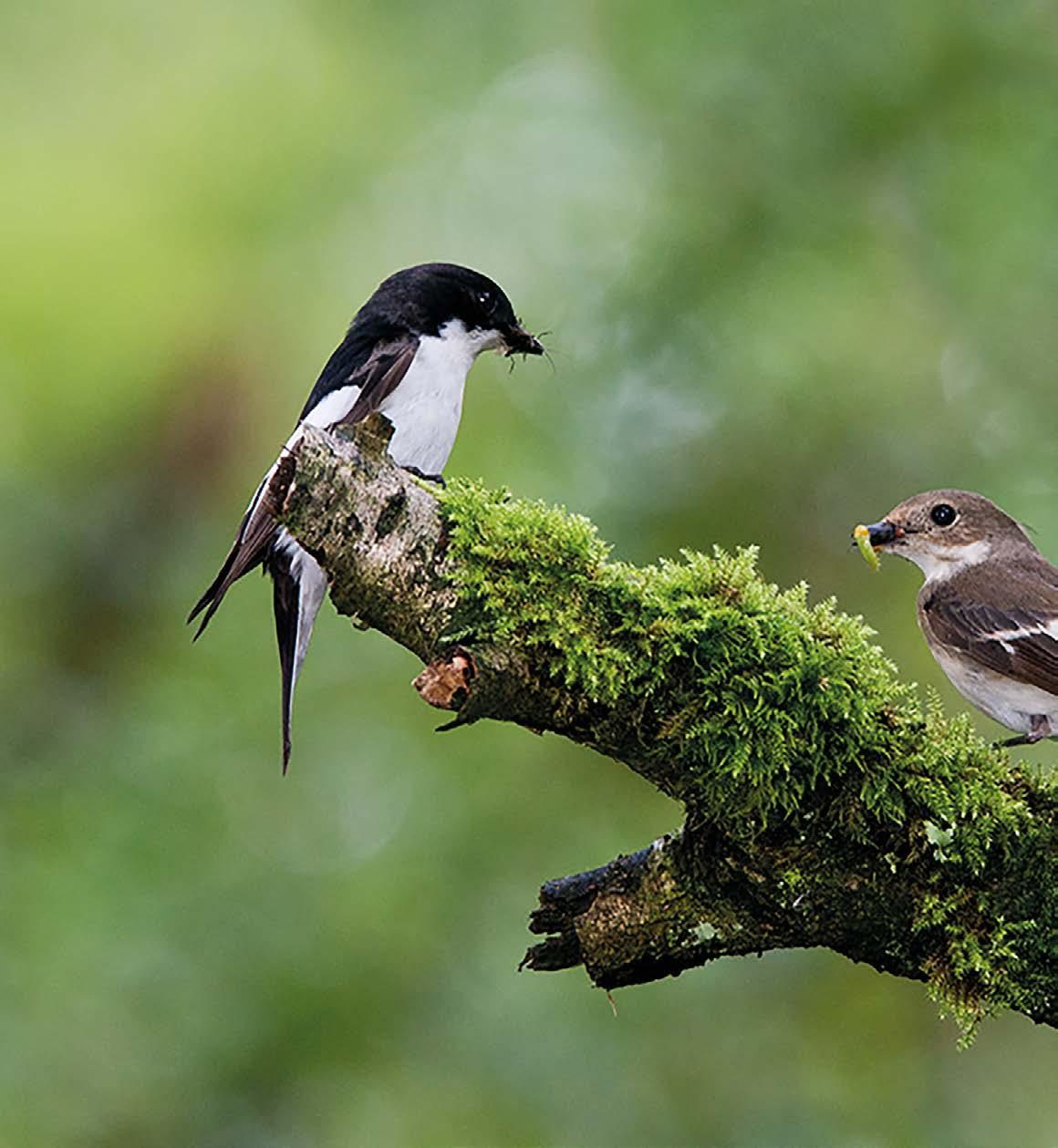
Summertime and the living is easy – but not if you have a couple of big festivals to organise.
As the sun set on another colourful and vibrant Manchester Festival of Nature, this edition of Lapwing went to press, and we all breathed a happy sigh of contentment and relief. MFoN is a joy on the day, but preparation for next year begins today.
Thousands of people attended the festival to learn about the amazing wildlife in Manchester and the wider region, and the conservation work carried out by your Wildlife Trust and our partners in the Manchester Nature Consortium and beyond.

There is no time to relax because Irish Sea Day is looming in just a few short weeks; a string of festivals wrapped around the coast, taking in nine Wildlife Trusts and six countries.
I had to think about that one –England, Scotland, Wales, Northern Ireland and Ireland, along with the Isle of Man will all be hosting events involving Wildlife Trusts from our patch, Cumbria, Cheshire, Wales, Scotland, the Isle of Man and the Irish Trusts, along with lots of other organisations. I do enjoy events where we collaborate with our colleagues from other Trusts. It amplifies the message that we are creating and improving a Nature Recovery Network across the whole United Kingdom.
"There

I hope as members of the Wildlife Trust for Lancashire, Manchester and North Merseyside, that you visit other Wildlife Trust reserves when you are travelling around the United Kingdom. It gives me a warm feeling to know that the work we are doing here is part of a national movement for nature.
In this edition of your Lapwing magazine, we look at a couple of our less well-known nature reserves. Moor Piece, in East Lancashire, is a lovely tranquil sanctuary and a breeding home to one of my favourite birds, pied flycatchers. Read about how our fantastic nest box monitoring scheme has been helping this charming upland oak wood specialist on pages 24 and 25.
Meanwhile, Cutacre is one of the Trust’s real unsung success stories, largely down to the work of the wonderful volunteers whose efforts (alongside those of our conservation grazing cattle) are bringing wildlife back to what was once overgrazed horse pasture. One of the great things about this reserve is that it is so accessible, just off the busy Mort Lane in Tyldesley.
Let’s hope commuters heading into Manchester appreciate this wonderful wilding landscape rather than just driving past. Find out more about an exciting restoration project happening there on pages 18 and 19.
I have written an article about my favourite summer wildlife (pages 3435) and elsewhere the team will be looking at the benefits of bug hotels (pages 16-17), lapwings (pages 4-5) and wonderful coastal butterflies (pages 8-9).
Many of those butterflies and bugs will be buzzing around now looking for a wild garden, just like the one belonging to Laura, our Fundraising and Digital Marketing Officer. Laura spends a lot of her working life at a screen, so it’s great to know she can use her spare time scruffing up her garden and making safe spaces for wildlife (pages 20-21).
This summer, we are also saying a fond farewell to two of our stalwart team members – Director of Conservation, Tim Mitcham is retiring after 35 years at the Trust and Director of Marketing, Lindsey Shaw is leaving us, after 16 years, to lead the marketing team at UCLAN.
Both Tim and Lindsey have shaped our Wildlife Trust, making it the most respected conservation champion in the north west (pages 42-43). We will all be sorry to see them go.

Tom Burditt, Chief Executive Officer

Charlotte Castle shares her love for one of our favourite birds - and our magazine’s namesake.
Since starting as the Heritage and Conservation Trainee at our Lunt Meadows nature reserve last year, I have seen many fascinating species and several now have a soft spot in my heart. From spoonbills and shorteared owls, to bats and butterflies it is hard to pick a favourite, but one of my best-loved has to be the glamorous lapwing.
These striking birds are absolute show-offs, dressed to impress with their slicked back feather crest and metallic iridescent plumage of purple, blue and green hues. They perform amazing aerial displays - wheeling, tumbling, twisting and looping through the sky.
When paired up the couples can perform spectacular flying dances. Males display to attract a partner and cry a piercing ‘peewit’ (another common name for this species). Although, in the past lapwings were thought to bring bad omens by crying ‘bewitched, bewitched’.
On the ground the males, being great showmen, take a bow to show off the orange patch underneath their tails to prospective partners. Also in the lapwings’ repertoire are a distinctive series of high-pitched whistling ‘wees’ and ‘whoos’ which sound like they are enjoying their rollercoaster frolics crying ‘weehooop’! Seeing their displays always fills me with awe and delight.
Overhead, their rounded wings, almost comically big for a rather small bird, are another unmistakable feature. Their Latin name, Vanellus, means 'little fan' and is inspired by their flippy floppy flight. The name lapwing is thought to be from an Old English term for ‘leap with a flicker in it’ as, in their large winter flocks, their flapping wings seem to flicker between black and white.
Lapwings make their home in the wide open on farmlands and wetlands where wet grasslands, such as at Lunt Meadows, provide plenty of yummy worms and insects. In contrast to their extravagant flights and feathery features, their nests are very simple scrapes in the mud or sand, cleverly concealed on uneven ground. They lay brown mottled eggs and their chicks are little fluffy brown splodges. This camouflage is important in such an exposed existence; lapwings love low vegetation and bare ground.
At Lunt Meadows they tend to nest in nearby fields and come onto the reserve to feed. They really like ploughed fields - as our archaeology group discovered whilst field walking last year. Lapwings are ferociously protective parents, shooting into action to mob gulls and birds of prey much bigger than themselves. They make a right ruckus to chase and lead potential predators far away in dramatic aerial fights. Neighbours often join in too, forming a veritable air force.
"These striking birds are absolute show-offs, dressed to impress with their slicked back feather crest and metallic iridescent plumage"

I take lovely lapwings for granted sometimes, as I see them quite often at Lunt Meadows and near my home. They are our most widespread breeding waders, but numbers have plummeted by nearly 60 per cent since the 1960s, and they are now on the UK Red List. In some areas breeding lapwings have completely vanished. This has been driven by changes in land management such as crops being sown in autumn instead of spring, less variation in farmland and the draining of grasslands. Lapwings have also suffered increased nest predation.
However, creating and protecting nature reserves such as Lunt Meadows provides a lifeline for these brilliantly dramatic dancers. Hopefully they will continue to delight for many more years.
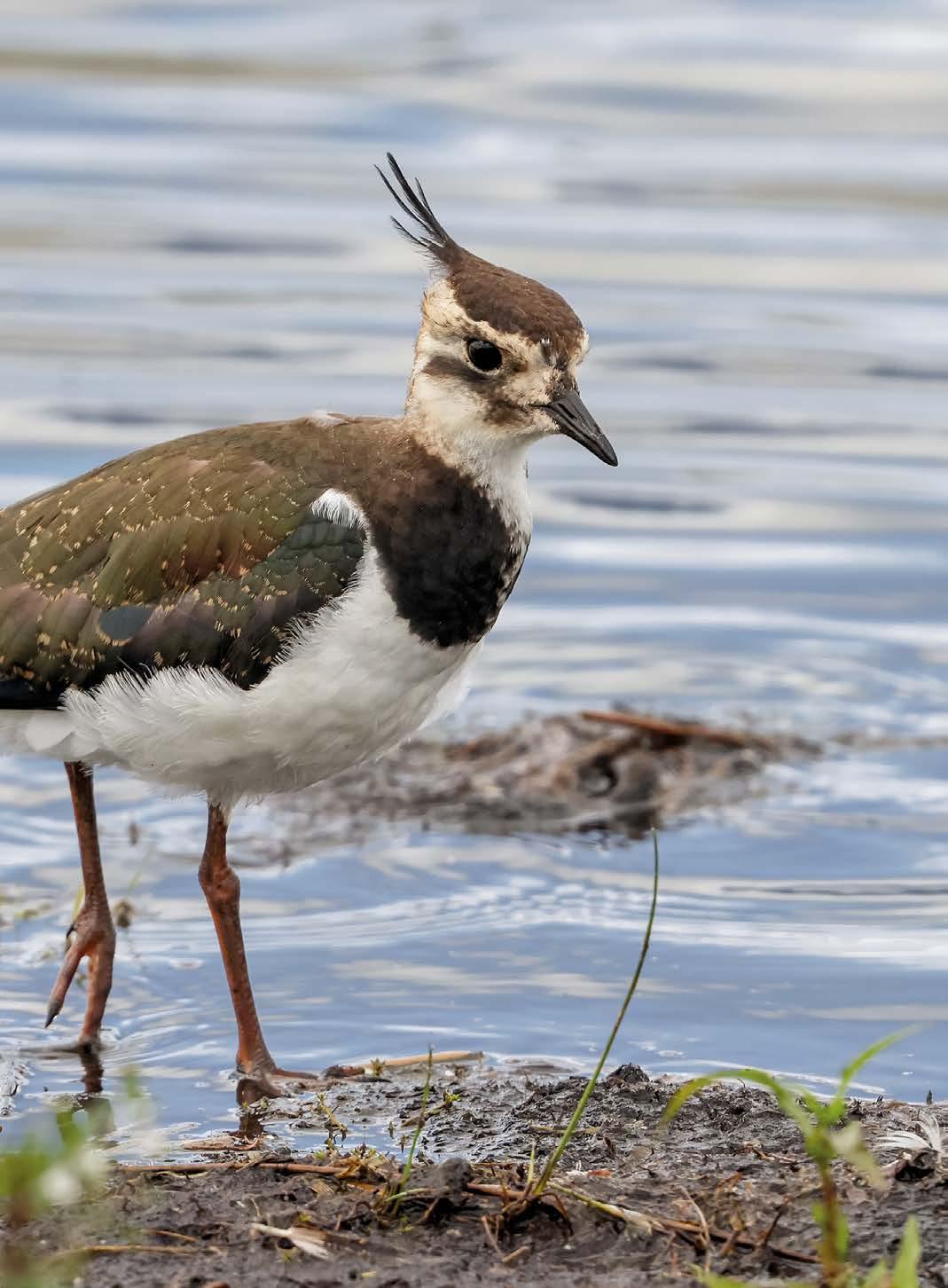
"They
lay brown mottled eggs and their chicks are little fluffy brown splodges. This camouflage is important in such an exposed existence; lapwings love low vegetation and bare ground."
By donating to our Step up for Wildlife appeal you can help us to create more safe homes for lapwings and other ground nesting birds.

The Presenting Mesolithic and Modern Life Project at Lunt Meadows is made possible with The National Lottery Heritage Fund. Thanks to National Lottery players, we have been able to carry out conservation work that supports creating lapwing habitats and enabling people to see them. We would also like to thank our project partners: the Museum of Liverpool, Soroptomist International Crosby and the Dept. of History and Archaeology at the University of Chester.

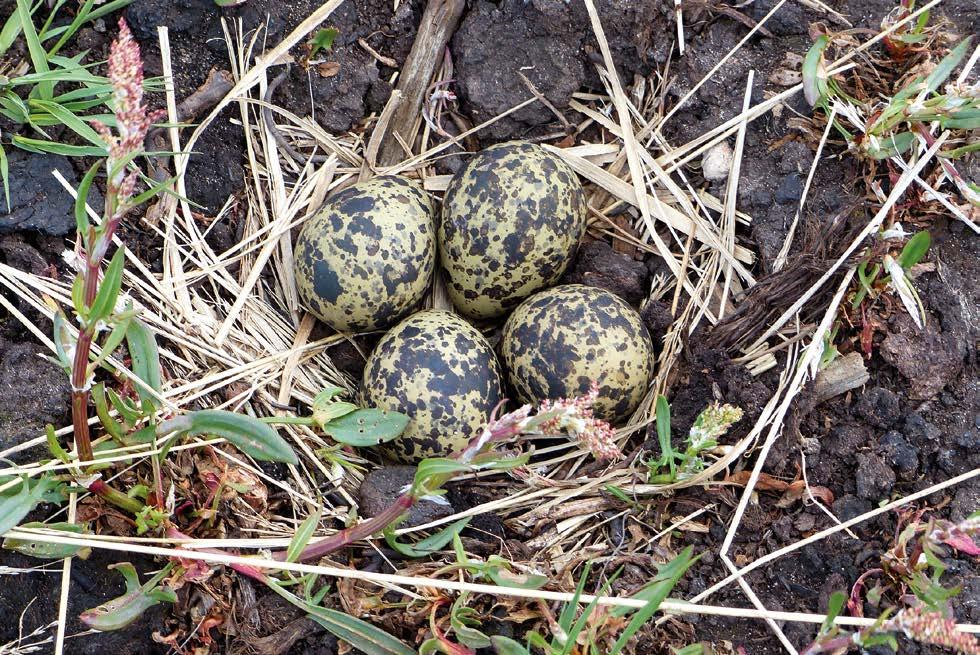
The West Pennine Moors Landscape Recovery Scheme aims to rejuvenate one of our most loved landscapes over the next 20 years. Jenny Bennion finds out more.

Darwen (Jubilee) Tower, Winter Hill, Rivington Pike. For anyone who lives in or around the West Pennine Moors, these iconic landmarks are part of our landscape consciousness. But what about the area that surrounds them?
The West Pennine Moors may conjure up images of a bleak and seemingly barren landscape, but in actuality they are a varied mix of different habitats, communities and land uses.
The West Pennine Moors includes 34 per cent of Lancashire’s blanket peat bog and 18 per cent of our grassland along with a mixture of woodland, grazed farmland, clough woodland, Atlantic rainforest and heath - and includes three protected Sites of Special Scientific Interest. They are also home to 185 priority species of concern for conservation.
But they need our help.
This is a landscape that has been hit hard by human interaction. The gradual drying of the land due to drainage of the blanket peat bog for sheep farming, loss of woodland, and the effects of climate change has left it susceptible to wildfires (who could forget the devastating 2018 Winter Hill fire), and much of the area is now nature-poor and increasingly challenging for the farmers and landowners to manage.
The West Pennine Moors have a landscape scale problem, which requires a landscape scale solution. That’s why we are delighted to have been awarded £750,000 of funding from Defra as part of a Landscape Recovery Scheme to rejuvenate nearly 8,000 hectares of this wonderful place.
We will be working with partners across the West Pennine Moors including United Utilities, the Woodland Trust, Chorley and Blackburn with Darwen Borough Councils, and over 30 other landowners and tenant farmers. The next two years will see us working together on the development phase of the project; drawing up plans and securing funding streams to rejuvenate the landscape, bring back lost wildlife, restore habitats, and develop new ways to farm and manage the land that will work in harmony with nature.
Following on from this, the project will enter its full 20-year implementation phase. That’s where boots (and maybe the odd digger) will get onto the ground, beginning to make positive changes to benefit the landscape.
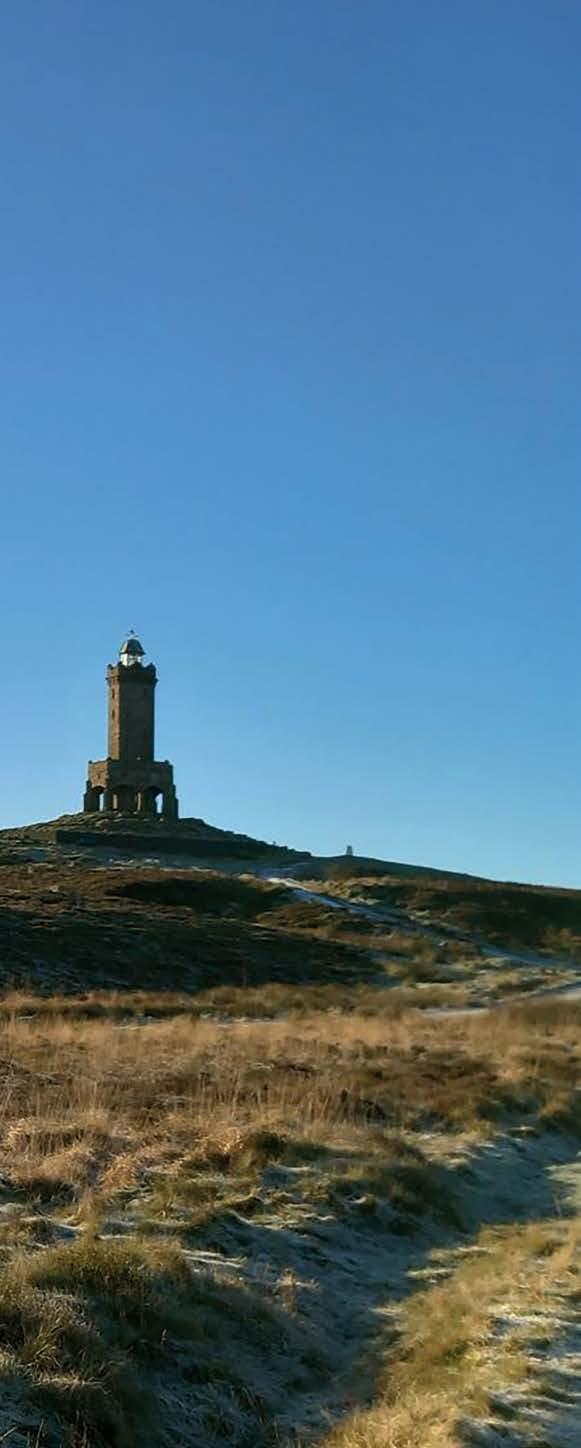
Do you live, work or visit the West Pennine Moors? How would you like to see them in the future? Get in touch at
But the Landscape Recovery Scheme is not just about nature, it is about people too. Over one million people live on the doorstep of the West Pennine Moors. Whether it is the farming community working on the land, the walkers who enjoy the peace, wildlife and connection to nature that their visit brings them, or the local communities who are the moors’ neighbours, people are at the very heart of this project.
"It can be a delicate balancing act to support farming livelihoods alongside nature’s recovery and ensuring that people from far and wide can benefit from the connection to nature that the West Pennine Moors bring."


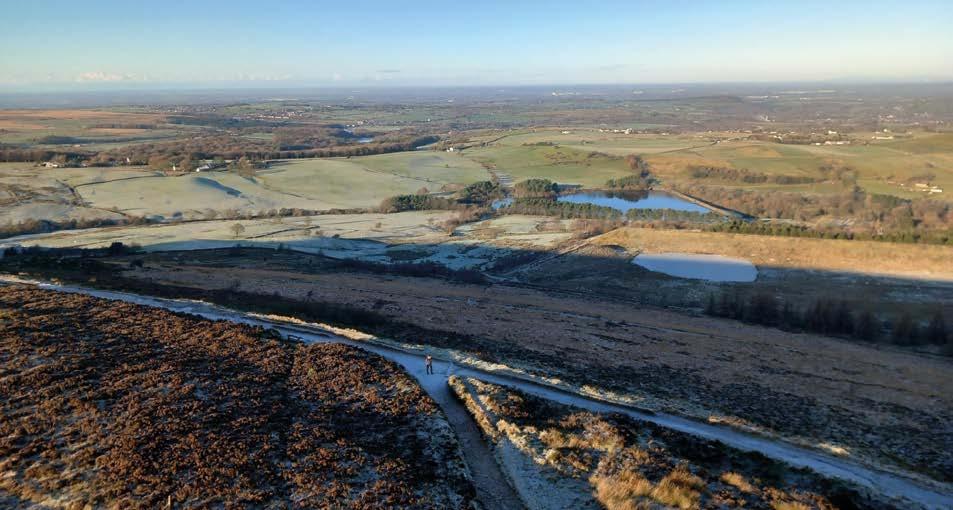
We have already organised a number of community consultations to understand how people interact with, and feel about, the landscape using this vital information to help shape the plans for the 20-year implementation phase.
It can be a delicate balancing act to support farming livelihoods alongside nature’s recovery and ensuring that people from far and wide can benefit from the connection to nature that the West Pennine Moors bring.
"Whether it is the farming community working on the land, the walkers who enjoy the peace, wildlife and connection to nature that their visit brings them, or the local communities who are the moors’ neighbours, people are at the very heart of this project."
A series of community events will be a big part of the project, alongside giving local people ownership over the future of landscape through schemes such as reinstating a volunteer ranger service to help support people to enjoy the landscape safely, protecting it from leisure-induced fires and disturbance from people and their pets.
The West Pennine Moors is an important asset to the varied communities that interact with the area. Communities that are as diverse as the landscape they surround. The Landscape Recovery Scheme aims to support nature to support people.
Kirsty Tyler looks at some of the butterflies we may see fluttering around our coastline this summer.
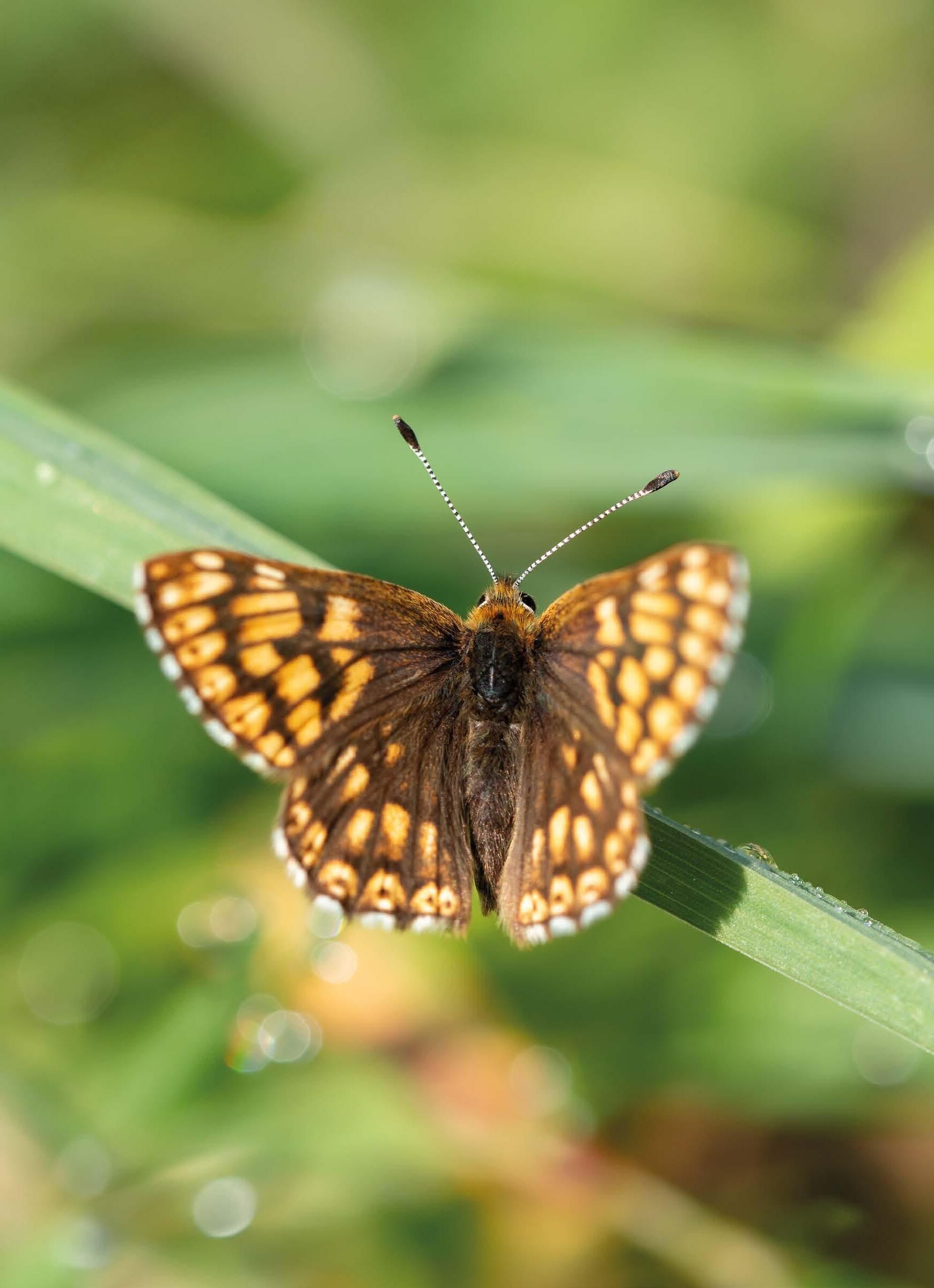
Living on a small island, it’s no wonder that many of our butterfly species have evolved to live on our coastlines - and some migratory species have a summer holiday on our coasts to feed and breed too.
We have so many wonderful butterflies in the UK that all occupy their own niche, whether that’s specific habitats or food sources. Sitting somewhere on a lovely day and butterfly spotting for a couple of hours is a peaceful way to spend your time and boost your wellbeing, and these are just three species that you could look out for.
Why not join one of our guided walks and see if you can spot a butterfly? Check out org.uk/eventslancswt.


A true coastal butterfly, the grayling can be found on dunes, saltmarshes, undercliffs and on clifftops. One of the caterpillar’s food plants is marram grass, a key species found on sand dunes.
They can be quite difficult to spot with mottled brown wings helping them to camouflage against the bare earth and stones along the coast.
Grayling numbers have declined by over 60 per cent since the 1970s with habitat loss being a main factor, but it’s hoped that with projects like the Fylde Sand Dunes helping to protect and increase the dune habitat, numbers may increase.
The clouded yellow is a colourful migratory species that comes over to the UK from Europe and North Africa. Most years sightings are rare, but occasionally they will show up en masse, known as ‘clouded yellow years’. Their caterpillars enjoy clover and common bird’s-foot trefoil, so adult butterflies have little difficulty in finding suitable breeding grounds, usually sticking closer to the coast rather than venturing further inland.
The butterflies are unable to survive our winters which is why they migrate, however as a result of climate change, we may begin to see more of these butterflies for longer periods.

"Grayling numbers have declined by over 60 per cent since the 1970s".
"Habitat loss is a huge factor in the decline of butterfly and moth species"
The fairly small Duke of Burgundy isn’t specifically a coastal butterfly, normally found living in small colonies on chalk or limestone grassland or woodland with large clearings. However, the only colony of it in the north west is actually on a very small part of the Morecambe Bay coastline in beautiful Silverdale, which has both limestone grassland and woodland.
The males are very territorial, defending their small sunny patch and fighting off competition or chasing down females. The caterpillars feed on primroses and cowslips and begin to pupate in late summer, slumbering away until the following spring.
Habitat loss has seen Duke of Burgundy numbers drop by more than 80 per cent since the 1970s, and the small surviving populations in the north west and over in Yorkshire are thanks to the intense work by conservationists to manage their favoured habitat.
Habitat loss is a huge factor in the decline of butterfly and moth species, with increased development of land for industry and intense farming eradicating many of the plant species that they rely on for food.
Our government will need to step up their efforts for nature’s recovery with strong policies such as supporting farmers in switching to wildlife-friendly farming, tougher environmental regulations and, above all, a commitment to tackling climate change.
We may lose the opportunity to see the happy sight of a butterfly fluttering past if we don’t support our precious wildlife

We’re always blown away by the generosity of you, our fantastic supporters, and we want to highlight some of the wonderful things you’ve been doing in the last few months.
What an amazing six months we’ve had since we launched our Step up for Wildlife appeal. The latest piece of the appeal puzzle, the Wet Willow Wildlife project, was a remarkable success when you helped us kickstart this project through the Big Give’s Green Match Fund, smashing our target and raising an amazing £21,117! Thanks to your kind donations we can ensure there is always a home for the rare willow tit in our region.
Whilst we celebrate this achievement, resting on our laurels isn't an option just yet. We need your continued support to reach our £300,000 target.
Every donation, no matter the size, brings us closer to our ultimate goal of creating a better future for wildlife. So please, share the appeal with your friends and family, and we’d love to see more of your wonderfully creative fundraising efforts!
We’d like to say a huge thank you to the Chorley and Leyland Lions for their generous donation of £500 towards our Step up for Wildlife appeal. The club kindly chose us as one of the recipients at their Annual Presentation Evening. It was lovely to share stories with all their members about how much wildlife means to them.

We really enjoyed hearing about the wildlife they see in their gardens, from cheeky, territorial robins to a family of badgers that enjoy running up and down a wall! Their support and kind donation will help us to write a new chapter in the story of our local wildlife - one of hope, resilience, and renewal.

We’re excited to announce that The Lytham Rotary Club have joined the Trust as our very first Wildlife Champions group. We spoke to members of their group at their regional Rotafest celebration, who said they simply couldn’t wait to get stuck in with supporting us and are already planning their first beach litter-pick fundraiser.
From supporting us, to taking their own steps as a club to become more sustainable, their support will help us do more to protect our local wildlife and wild spaces.
Thank you to the incredibly talented Irene Amiet, who has raised £500 for our Step up for Wildlife appeal, with £5 from every sale of her newest publication Light on the Wing being donated directly to our team of wildlife protectors.
Irene is a freelance writer and award-winning international photographer. From her home in the north of England, Irene is drawn to the local wildlife, untamed forests and rugged landscapes,as well as the farming lifestyle that connects people to the land.
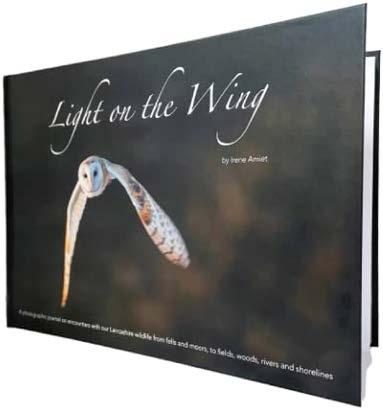
The book is a wonderful collection of dawns and dusks, birds in flight and creatures hidden in the hedgerow - stunning snapshots into the abundant wildlife we have right on our doorstep in Lancashire and the surrounding counties.
Her work can be seen, and her book purchased, online or in Knowle Top Studios, the gallery she shares with her husband Duncan Phillips in Clitheroe.
By Lucy Coxhead, Fundraising Manager, and Megan Kelsall, Partnerships Manager.
JENNY BENNION
Senior Communications Officer
ANNABELLE BRITTLE GMEF Communications Assistant
TOM BURDITT Chief Executive Officer
CHARLOTTE CASTLE Lunt Meadows Heritage and Conservation Trainee
KIM COVERDALE East Lancashire Reserves Officer
LUCY COXHEAD Fundraising Manager
LAURA CRONIN Fundraising and Digital Marketing Officer
HELEN EARNSHAW Peatlands Programme Senior Project Officer
LYDIA GERMAN Senior Content & Campaigns Officer
ADAM GRAHAM Lunt Meadows Reserve Officer
ROLAND HOWARD Wigan Greenheart Communications Officer
JENNY JOHNSON Head of Marketing & Income Generation
MEGAN KELSALL Partnerships Manager
AMY SHAKESHAFT Communications & Campaigns Assistant
HANNAH STEVENSON Marketing Manager
MATTHEW SWIFT Marketing Officer
KIRSTY TYLER Nature & Wellbeing Communications Officer
ALICE WOOD Marketing Support Officer
ALAN WRIGHT Head of Campaigns and Communications

Annabelle Brittle explores the issues facing nature in Greater Manchester, and what is being done to help.
Greater Manchester’s first ever State of Nature report provides a thorough review of the city region's wildlife, spaces for nature and wider environment – and it makes for worrying reading.
The report was published in early March 2024 and has revealed a long list of concerning statistics about the state of nature across the region. Among them, it shows that up to 40 per cent of individual bird species populations have declined in the past 40 years, a third of Greater Manchester residents can’t access green spaces within 15 minutes of their homes, and not a single river in the area is in ‘good’ ecological condition.

Check out other Green Spaces Funded projects atgmenvfund.orgwhy not volunteer or get involved with their events?
"However, there is hope. There are dedicated people and projects who are working to turn the bad news into good."


1. 93 per cent of residents consider it important or very important to live close to nature, but an estimated third of Greater Manchester’s population do not live within 15 minutes of a green space.
However, there is hope. There are dedicated people and projects who are working to turn the bad news into good.
With that in mind, let’s dive into some of the most concerning statistics in the State of Nature report and explore some of the vital work going on behind the scenes to improve the situation.
One initiative tackling this problem is the Greater Manchester Environment Fund. Its Green Spaces Fund is a £2.6 million pot of money to help community groups increase the amount of accessible, nature-rich green space in Greater Manchester, particularly in the areas where people need it most.
A total of 86 projects have received support since the fund launched in 2022, including wildflower meadows, allotments and community gardens. So far over 3,000m 2 of new green space has been created, nearly 240,000m2 of existing green space has been improved, with a total of 302,607 trees, shrubs, bulbs, vegetable plants and flowers being planted.
With 65 current projects still ongoing and further funding rounds on the horizon, it’s heartening to know that grassroots action, powered by proactive people, is making huge improvements to green spaces in Greater Manchester. >>>
"It’s heartening to know that grassroots action, powered by proactive people, is making huge improvements to green spaces in Greater Manchester."
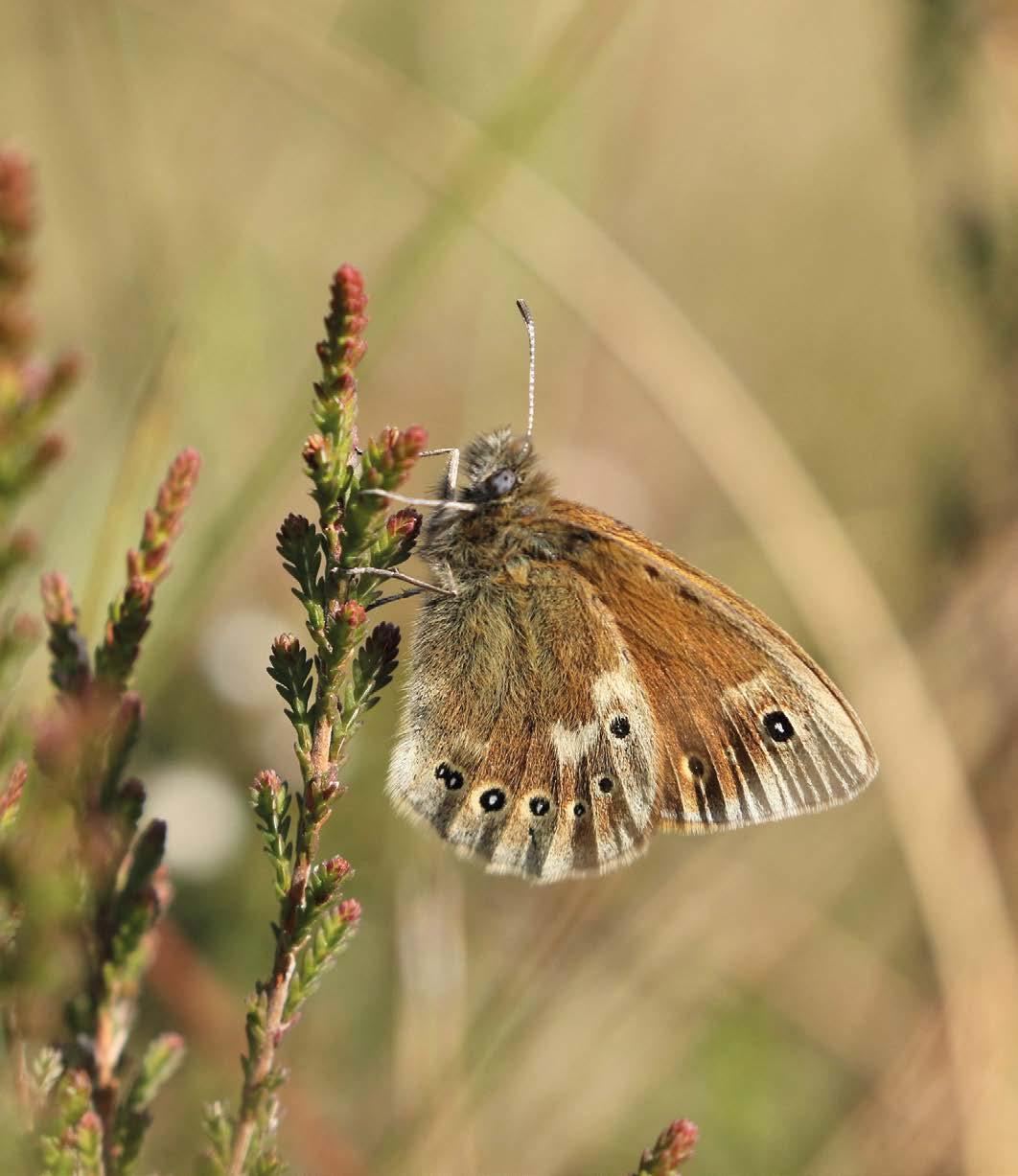
2. Some of our most recognisable species are showing worrying declines. hedgehog numbers are down by 24 per cent, and even those ‘super survivors’, red foxes and rabbits, have shown declines of 44 per cent and 64 per cent respectively.
If even common and adaptable species are showing a decline in numbers, we should be worried. However, there is evidence that threatened species can make a comeback thanks to dedicated conservation efforts.
An example of this is the successful reintroduction of the large heath butterfly. Known locally as the Manchester argus, they became locally extinct during the 19th century, but a joint project between your Wildlife Trust, Chester Zoo, Natural England, Manchester Metropolitan University and other organisations in the Great Manchester Wetlands Partnership brought the species back in 2020.
Find out more about the Wet Willow projectWildlife at lancswt.org.uk/ wet-willowwildlife
After re-wetting previously drained peatland areas and re-establishing the specialist vegetation that they need to survive, around 50 butterflies were released into the restored habitat. Since then, a further two reintroductions have taken place, and the new population is now self-sustaining.
Another example is the increase in otters across the city region. UK otter populations had dwindled to near extinction by the 1970s, largely due to pesticide pollution in rivers and hunting.
However, records collated by the Greater Manchester Ecology Unit show that there have been increasingly regular sightings of otters across the majority of Greater Manchester, thanks to riverside improvement and flood management projects led by groups like Natural Course.


3. Notable falls in bird species, with a 32 per cent drop in tree sparrows, 40 per cent decline in lesser redpolls and a 36 per cent drop in snipe numbers.
The loss of native birds in the UK is hugely worrying, so it’s encouraging to see serious action taking place close to home. Willow tits are the most endangered small birds in the UK, with their numbers dropping by approximately 90 per cent in the last 50 years. More than 15 per cent of the remaining population is found in the north west, particularly around Wigan.
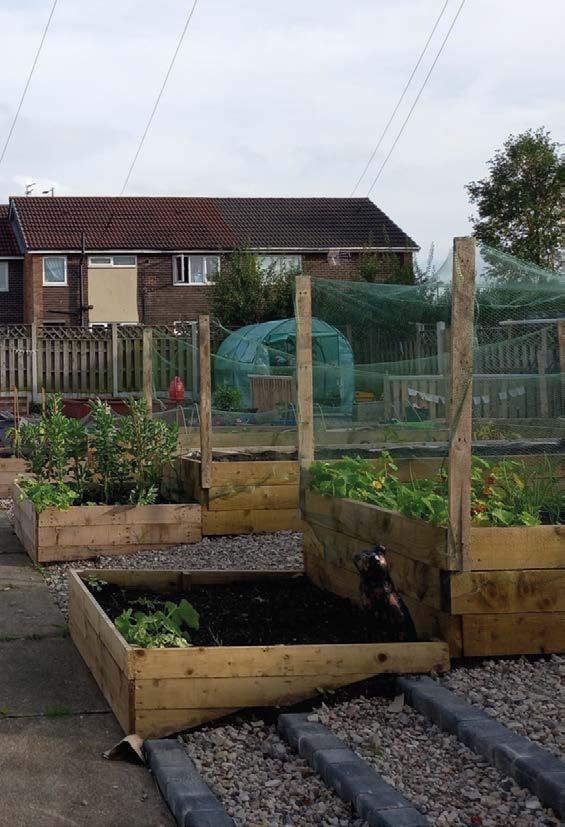

The Wet Willow Wildlife project, a collaborative effort between your Wildlife Trust and The Conservation Volunteers, is aiming to increase willow tit habitat and improve connectivity between the areas where they live.
Willow tits inhabit scrubby, wet woodlands, so preserving and enhancing sites like this across the north west is high on the agenda. Not only is this hoped to boost willow tit numbers, but it will also benefit other species such as lesser repolls and small sallow mining bees.
"Our peatlands are in a sorry state, with large-scale peat extraction and drainage severely impacting their ability to remove carbon dioxide from the atmosphere."

4. Greater Manchester's peatlands have been degraded by human activity over two centuries and now emit an estimated 187,525 tonnes CO2-equivalent per year.
Our peatlands are in a sorry state, with large-scale peat extraction and drainage severely impacting their ability to store and remove carbon dioxide from the atmosphere. Thankfully, restoration efforts such as A Bog's Life, a Green Spaces Fund project in Salford, are helping to improve the situation. A Bog’s Life is run by your Wildlife Trust and is transforming a patch of degraded peat at Little Woolden Moss into a living, breathing, educational bog.
11,648 m2 of green space is being created here, carefully planted with 10,000 specialist plants including cotton grass and different varieties of sphagnum moss. Restoring these vital carbon-storing habitats will not only help mitigate the effects of climate change but will also provide a home for numerous species and offer flood prevention through improved water retention.
Whilst the Greater Manchester State of Nature Report makes for worrying reading, we know that we can make a difference. We have the people, the passion and the knowledge to turn the bad news into good and support the future of our environment for wildlife and people.
Amy Shakeshaft discovers the best accommodation for crawling critters, and how you can be a five-star hotelier for our important, but overlooked, invertebrates.
With our busy lives do we always take time to appreciate insects?
Maybe we lose the ability to admire wildlife on a micro-level? Maybe we learn behaviours that make us shudder at the thought of a many-legged beastie spoiling our picnic… or maybe we forget the significance of insects to the rest of the food chain, and in turn, to us?
We know all about the role of pollinating bees, but did you know that 80 per cent of plants rely on other insects to produce fruit and seeds? Minibeasts also reduce pests and increase biodiversity in your garden. Creating a bug hotel isn’t just a fun learning activity for children, it is a vital part of the ecosystem.
An insect home, or 'bug hotel’ to use the popular nickname, is an artificial structure made from natural materials which supports the life cycle of various insects. From food and shelter, to breeding and hibernation, a habitat for our critter friends is of huge benefit to the health of our wider wildlife. The great news is that what makes first-class accommodation is usually already lying around your shed, garden, garage, or local tip.
If you do want to buy your hotel from a shop, there are features to look for, such as a sturdy roof that won’t get damp or mouldy, an easy to clean design and a fully covered back to shelter your occupants. We always recommend buying from a local, sustainable supplier, or an organisation which supports wildlife.
When it comes to building insect houses, keep it simple. Arthropods want tunnels, nooks and hidey-holes to rest in. Materials which provide this sort of shelter include leaves, wood, bark and other items with holes in to provide corridors for movement, nesting and hibernation such as bricks, reeds, drilled logs and bamboo. Wooden pallets are an easy way to provide the height and structure of your hotel, and allows you maximise space for different materials to attract a wider range of insects.
Ladybirds love dry leaves, sticks and straw, and lacewings will make use of corrugated cardboard to lay their eggs. If you’re feeling ambitious you could include a hedgehog house at the base of the hotel, providing an on-hand feast from the comfort of their ground floor suite. Or you could add stones and tiles with spaces large enough for frogs and toads to spend a frost-free winter.
"The type of insects you can hope to attract depends on the time of year, and where you place your arthropod accommodation. Some critters like cool,
damp
places whereas others, such as bees and hoverflies, prefer the sun."

The type of insects you can hope to attract depends on the time of year, and where you place your arthropod accommodation. Some critters like cool, damp places whereas others, such as bees and hoverflies, prefer the sun.
All insects need to be sheltered though, so wherever you build your minibeast mansion it needs to be protected from wind, rain, pesticides and other animals. It is also important to remember to clean out your bug hotel.

In late winter/early spring when insect activity is at its lowest, pop on some gloves and a mask before opening up your bug hotel and use a soft brush or small stick to clean out any debris. But be careful to avoid any sections that might be housing hibernating insects. A mini-beast mansion, bug hotel, insect house - whatever you want to call it - is an easy and effective way to cultivate a creepy crawly corner in your garden, local park or outdoor space.

"Creating a bug hotel isn’t just a fun learning activity for children, it is a vital part of the ecosystem."





Cutacre nature reserve is soon to become a paradise of wildflowers, hedgerows and traditional grasslands. Lydia German tells us more.
Our Cutacre nature reserve, which is situated near Bolton, will soon be receiving £28,646 from the Valencia Communities Fund. This will allow us to undertake a transformational project that will hugely benefit biodiversity at Cutacre and beyond. Once a series of overgrazed fields, this funding will be the next step in our plan to create a natural haven for people and wildlife.
Half of the site will be managed as a traditional meadow, meaning it will be cut annually with the cuttings used as hay for local farmers. The other half will continue to be managed as pasture, which is how it has been managed previously – it will just be a smaller area. Splitting the management style will increase the number of ecological niches available to a range of species.
More than 1,200m of ditches will be cleared to improve the soil condition and thus create optimal grassland habitat. The ditches will also provide homes and movement corridors for great crested newts, along with lots of other wildlife.

To encourage a diversity of wildflowers, we will be cutting or grazing the grass gradually so that it doesn’t die and release nutrients into the soil, which simply results in even more grass.
Wildflowers tend to favour nutrientpoor soil, so by creating these conditions it will allow the flora to germinate and spread.
In late summer, a local farmer will be coming to cut and take the hay away. We will then be receiving a delivery of 14kg of yellow rattle seed, which is nicknamed ‘the meadow maker’. It is hemiparasitic on grass, meaning that it takes its nutritional requirements from another living plant acting to weaken the grass and control its vigour.
As a result, the grass grows a lot thinner and is less abundant, meaning more light can get through and more wildflower seeds can germinate.
In August we will be receiving 7,000 wildflower plug plants from Cheshire Wildlife Trust. Over the next few years, this will provide us with an excellent source of wildflower seeds and the infrastructure to collect them, meaning they can support other projects around the Trust. Our volunteers will be plug planting from September onwards.
With the improvements in our management technique, the meadows will get better and better over time. Within the next few years we can expect the meadow fields, which cover 12.75 hectares, to be filled with at least 72 million plants on a typical day in early summer - and the total for Cutacre as a whole will be significantly higher.
"With the improvements in our management technique, the meadows will get better and better over time."

Finally, as part of the funding we will also be bringing in the current national hedgelaying champion, Peter Gibson. Peter will lay 541 metres of hedges in additional to the existing 372m which has already been completed by our wonderful volunteers. Laid hedges serve as a natural barrier to the reserve and double up as an excellent habitat corridor.
The Valencia Communities Fund is made possible due to landfill tax from the local Bury landfill site. Landfill tax is an environmental levy imposed on waste disposal and is ‘designed to incentivise waste reduction, recycling, and sustainable waste management practices’.
This fund was secured with help from members of the Veterinary Green Discussion Forum, who have generously donated 10 per cent of the amount to unlock the overall fund. They also support the Trust with numerous other donations and by holding their annual event at Brockholes nature reserve in our conference venue.
We have also received contributions to funding the Cutacre project from The Webinar Vet, Mayne Vets, Harrison Family Vets and Rebecca East.
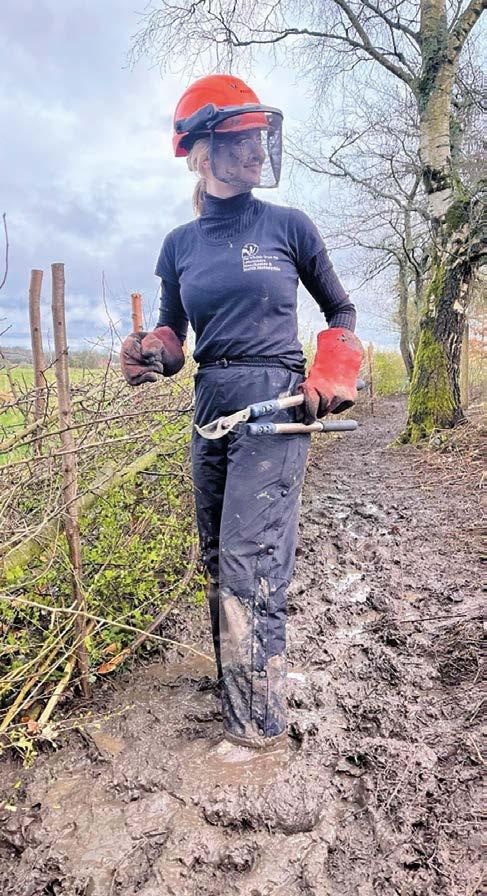

With over 20million gardens in the UK, Laura Cronin explores how we can take small steps to make a big collective impact for the wildlife on our doorsteps.

Don’t forget to send photos of your wild garden to fundraising@ lancswt.org.uk and tag us in your photos on social media too.
Did you know, the gardens in the UK cover a bigger surface area than every Wildlife Trust nature reserve combined – that’s over 2,600 reserves! If we all take a few small actions to make these spaces a little more welcoming for wildlife, we can make a huge difference. Imagine a network of 20million mini nature reserves supporting thousands of species.
Luckily, some of the best (and easiest) things we can do to help wildlife at home involve not being overly tidy and organised. Whilst we can all appreciate the aesthetics of a well-manicured garden, there is also so much beauty to be enjoyed in the sights and sounds that we can welcome into our spaces by gardening with wildlife in mind. Here are a few ideas to help you get started...

Traditionally neat pristine lawns don’t offer much benefit for wildlife. Leaving more time between mowings or allowing areas to grow longer over spring and summer provides shelter for invertebrates and creates foraging opportunities for birds and small mammals.
Many of the wildflowers that can appear in our lawns when given the chance are also a wonderful nectar source for pollinators. With many pollinator species in decline, these creatures need every bit of help we can offer.
In my own lawn last summer, I counted at least nine wildflower species including buttercups, selfheal, fox and cubs, common spotted orchid and more. If you’re growing longer areas in your lawn this summer, see how many new species you can spot.
Logs from your tree cuttings or old firewood can make a great shelter for invertebrates. Hang on to a few of these and stack them together in a quiet corner to create a habitat for minibeasts including beetles, woodlice and centipedes; this will, in turn, attract hungry birds, hedgehogs and more. Frogs and toads may also settle down in a log pile for winter, so you'll be supporting wildlife all year round.


Leaf litter can provide an essential home for wildlife over the colder months. Rather than tidying away fallen leaves in autumn, why not gather them into a pile?
A deep, undisturbed leaf pile is a perfect hibernation spot for hedgehogs; many butterfly and moth species will also spend winter tucked away amongst the leaves, either in their egg, caterpillar, pupal or adult forms. Save yourself a job clearing fallen leaves this year and create a cosy home for wildlife instead.
It can be tempting to cut back spent flower heads after they fade, but many flowers (including allium, sunflower and teasel) offer a wonderful food source for birds after they’re done blooming. By leaving these seed heads standing into winter, you’ll be helping birds stay well fed ready for breeding season in spring.
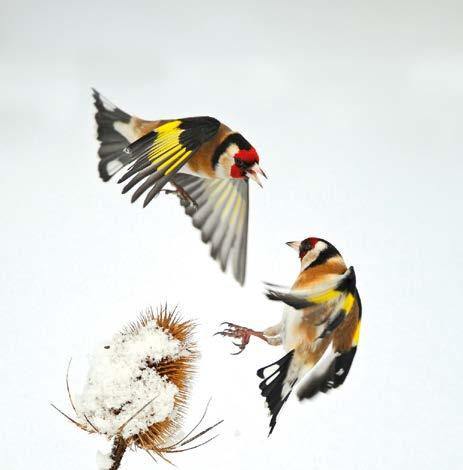

If you’ve been taking steps like these in your garden already, we’d love to know. Take our My Wild Garden survey and see how many actions you've taken. If you can tick off enough actions, you can receive your own hand-crafted My Wild Garden award (in exchange for a small donation) to proudly display in your garden and celebrate your little nature reserve.
Find out more at lancswt.org.uk/my-wild-garden
"Some of the best (and easiest) things we can do to help wildlife at home involve not being overly tidy and organised"

Tucked away to the north of Lancashire, our Birch House Farm site has undergone a radical transformation this winter, says Helen Earnshaw .
Once part of a larger lowland peat mass, the fields of Birch House Farm next to our Winmarleigh Moss Site of Special Scientific Interest (SSSI) nature reserve were drained in the 1970s for agriculture, and for 50 years has been grazing pasture for livestock.
That heavy grazing regime has had a devastating impact on the biodiversity and any lowland raised bog specialist plant species that were once present have disappeared.
The agricultural processes have not only led to a decline in biodiversity, but the draining of the land has led to the drying out and degradation of the peat. A habitat that should be taking carbon dioxide out of the atmosphere and locking it away in the soil is now emitting it, exacerbating the climate crisis. But a change is afoot.
This lost and degraded fragment of peatland has started a long journey back to active lowland raised bog and fen.
Walking across Birch House Farm this spring, the ground squelches underfoot and the view is very different.

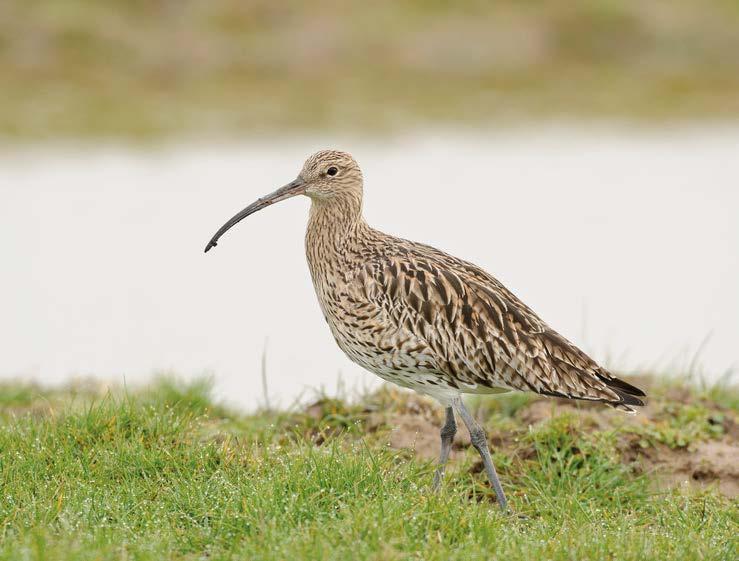

Thanks to a re-wetting programme and a winter dominated by heavy rainfall, the peat is already back to being wet and soggy, with surface water areas being enjoyed by mallard and teal.
Funded by Natural England’s Nature for Climate Peatland Grant Scheme, 4,501 metres of deep trench bunding has been installed throughout the 12 hectare field to raise the water table.
Deep trench bunding is an essential technique in peatland restoration, as it creates a 2m deep underground seal that prevents water from being lost from the land.
The cell structure created across the field by the bunds and the installation of pipes and weirs allows us to hold the water in certain sections and move it across the site to where it is needed the most.
Not only does this project aim to reduce carbon emissions, protect the peat soils and boost biodiversity, but it will also provide wider ecosystem services. In high rainfall events, the re-wetted soils of Birch House Farm, aided by the closing of the weirs, will hold on to these high levels of water, reducing the pressure on the surrounding ditch system and helping to alleviate flooding.
But this re-wetting work is just the first step. This summer, six hectares of the field will be sown with grasses and a water-tolerant flower mix to develop a varied composition of fen species.
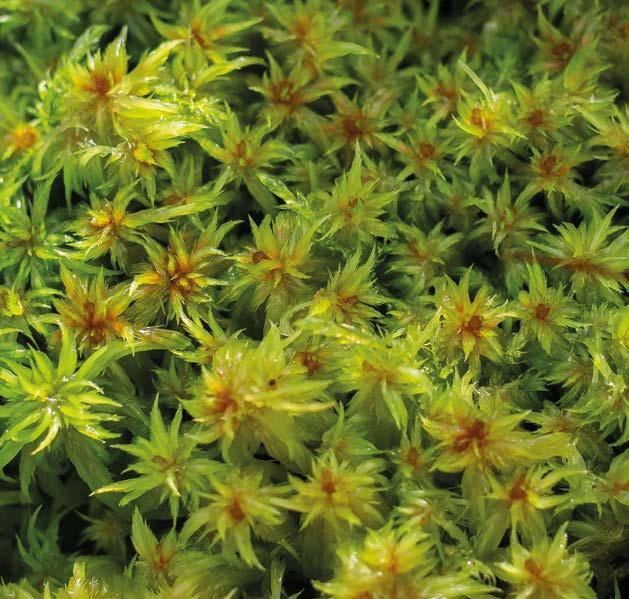
Not only is this crucial to boost the biodiversity, but this area of fen will act as a critical buffer zone for the newly created fragment of bog and for the SSSI, which is the best remaining example of lowland raised bog in Lancashire. Then in autumn and winter, that new area of peatland will undergo a major plant reintroduction project as 5,000 plugs of sphagnum moss and 50,000 cotton grass plugs will be planted to kick start the regeneration of the habitat’s specialist flora.
The road back to functioning bog will be a long one, but we are excited to see how Birch House Farm develops over the coming years.
"Thanks to a re-wetting programme and a winter dominated by heavy rainfall, the peat is already back to being wet and soggy"
‘Pristine,
primordial, adventurous, atmospheric, magical, peaceful’ - words the volunteers at Moor Piece use to describe this remote nature reserve, says Reserve Officer, Kim Coverdale .
Nestled in the Ribble Valley sits Moor Piece nature reserve. Whilst you’d be lucky to see another person there, wildlife abounds in this remote and special place that is dedicated to nature.
One of the many reasons to love Moor Piece is the pied flycatchers that return to the reserve in spring every year to breed, taking full advantage of the nest boxes that have been installed by volunteers. The first 10 boxes were put up in 1976 and there are now over 100, checked every year by staff and volunteers who record the nests, adult behaviour, eggs and young.
The woodland at Moor Piece includes mature Scots pine, silver birch, oak and beech trees but there are also areas of historic larch plantation. This, along with rhododendron introduced for game bird shooting cover and the effects of deer browse, means that there is plenty of work for our small band of dedicated staff and volunteers who are working hard to regenerate the habitat.
Myerscough College has been running felling courses in the plantation areas and, with the Trust felling team, has removed larger larch trees due to larch disease being diagnosed on the reserve.
"Moor Piece wouldn't be where it is today without our amazing volunteers – so thanks go to everyone past and present who has helped"
The distinctive pied flycatcher nests made from dried grass are easily differentiated from the mossy, feathery, fleecy, nests of the tits or the nuthatch nests of bark and leaves which are usually the first to nest.
Moor Piece is home to over 400 species of fungi, 65 species of bryophyte and 137 plant species. One species of fungus, Phallus duplicatus, is particularly special as it was the first record for the UK. It’s a type of stinkhorn that has a ‘skirt’ below its stinky top, and was found by members of the North West Fungus Group amongst an area of larch trees during a survey in 2016.
Rhododendron, a carrier of larch disease, was cleared in 2019, opening up new areas for native tree planting and natural regeneration.
Young trees are protected by brash, felled trees, plastic sleeves, netting, and deer fencing. Trial 'deer exclusion plots' were installed this year as part of a Countryside Stewardship scheme to assess if there is enough light to encourage successful natural regeneration.
Two new ponds have also been created as part of the Natural England District Level Licencing Scheme to make homes for great crested newts.


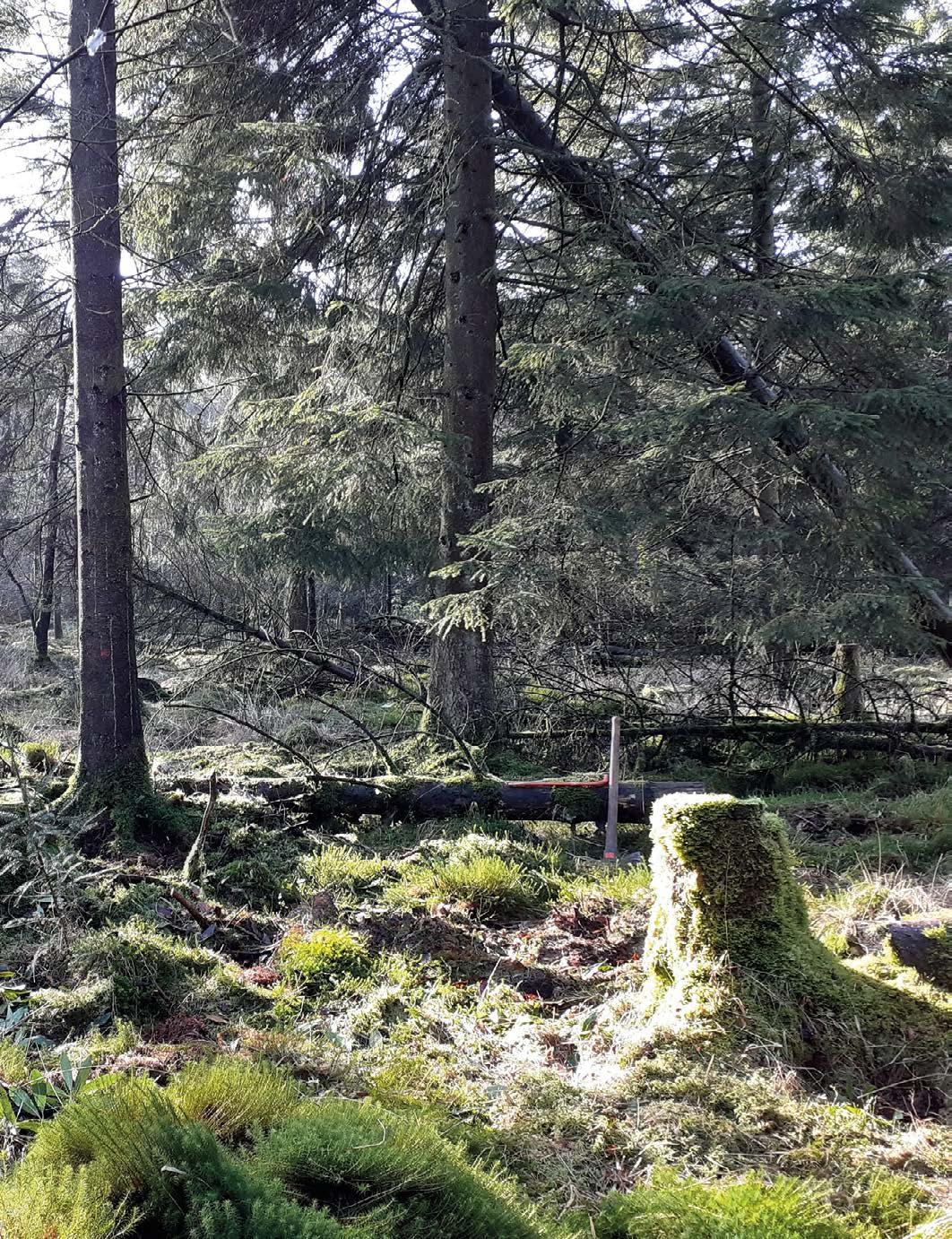
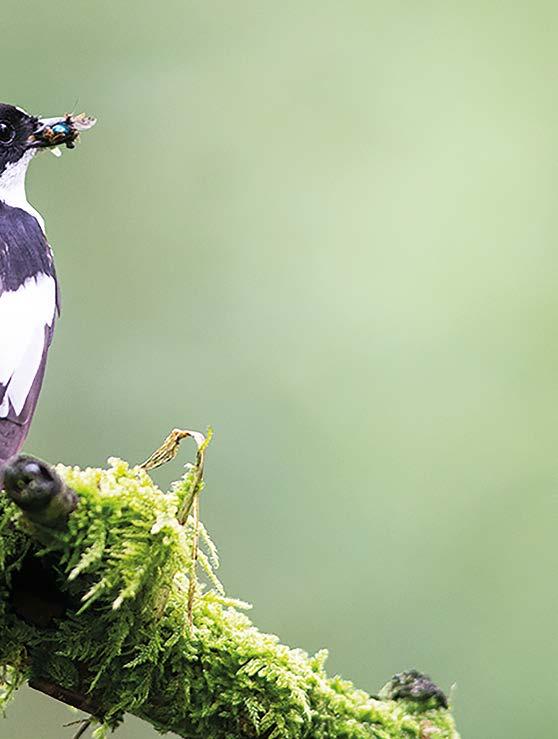
Bat boxes were installed in 2015 and are home to common, soprano pipistrelle and Natterer’s bats, including one bat which merrily roosted not in the box itself but in the space between the box and the tree.
Moor Piece is truly reserved for nature and so there is no public access. The sensitive habitat, lack of formal paths, challenging ground conditions, and the legacy shooting syndicate which also has access to the area, means that anyone wishing to enter the reserve must apply for a permit.
However, you can see deep into the woodland and hear the cacophony of birdsong from Rabbit Lane, a single-track road which bisects the site.
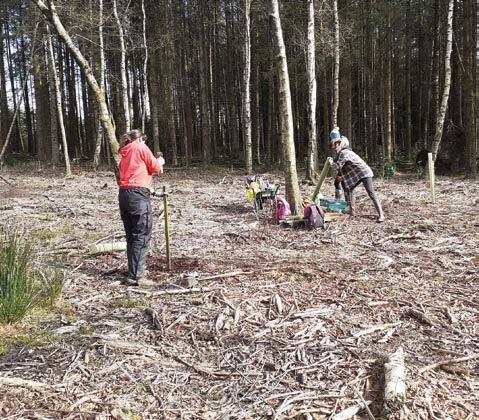
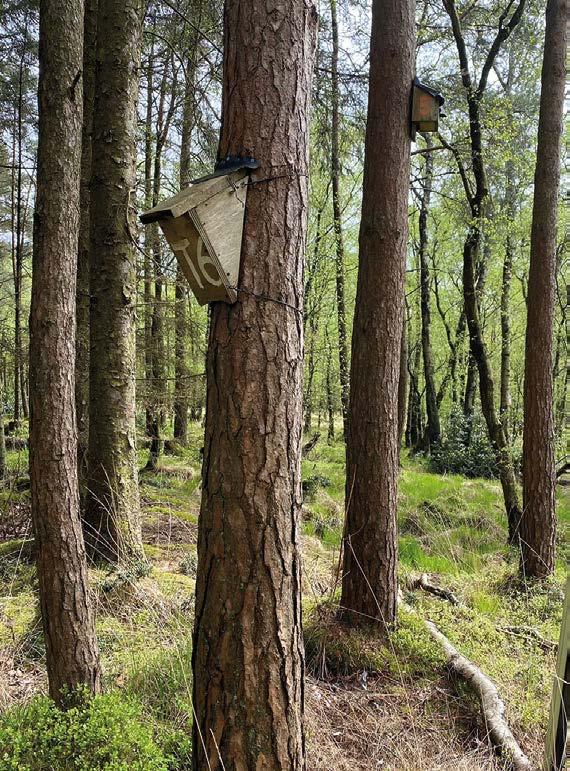
A handy bench on the junction of Rabbit Lane allows you the time and space to sit and listen, and maybe spot the black and white male pied flycatchers (the females are brown and white). If you are lucky, you may also hear redstarts, and you will certainly hear nuthatches and blue, coal and great tits during spring. A quiet walk along the lane is also often rewarded with a glimpse of roe deer, hares and buzzards.
Moor Piece wouldn't be where it is today without our amazing volunteers – so thanks go to everyone past and present who has helped, including Jon Fenton for organising the nest box scheme, Irene Ridge for her fungi information, Pat Waring for co-ordinating the bat boxes, Peter Smith for his wonderful photographs, Dougie Bowker for his historic information, and Russell Bury for his continued help and advice.
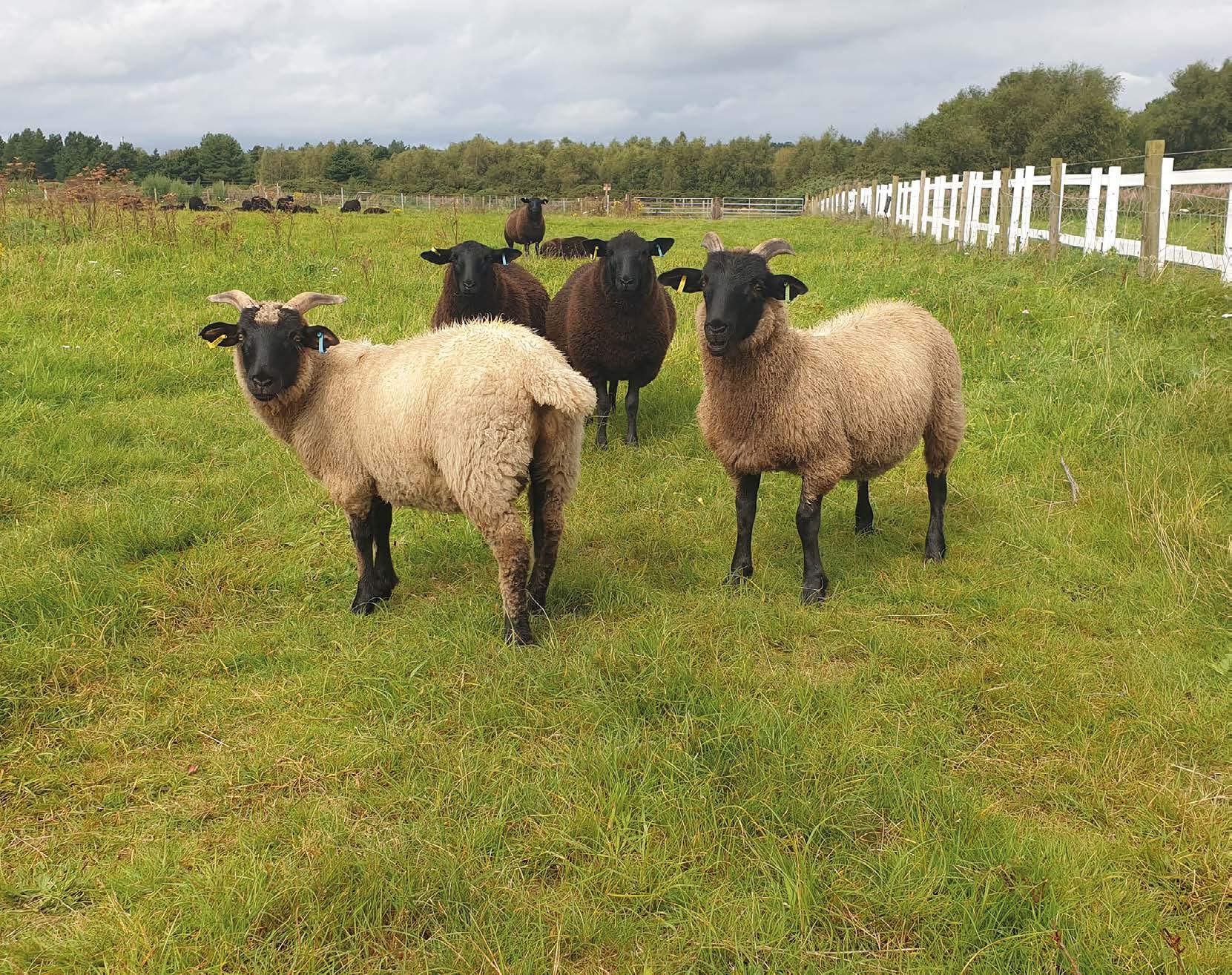
It’s summer so time for our conservation grazing sheep to have a haircut, but what happens to their fleeces? Jenny Bennion discovers more about these woolly wonders.
Our herd of native rare breed sheep are an essential part of our conservation team. These hardy sheep are fantastic at helping to control invasive species on our nature reserves, nibbling the vegetation close to the ground which allows many of our native wildflowers and plants to thrive. Along with our herd of goats and native cattle they form a formidable and natural conservation management team.
Looking after our lovely livestock is a full time job for Mike and Lucy, our Conservation Grazing Officers, along with a dedicated band of volunteers who check, feed and care for them around the clock.
Shearing is usually done over about a week or so around the end of May or beginning of June, with mobile shearing sheds being set up at the nature reserves with flocks. But then comes the question of what to do with the fleeces?
Traditionally wool was one of the main textiles used for clothing across Europe and from the medieval period wool was big business in the UK.
However, the demand for wool has waned due to the popularity of synthetic fibres. So much so that the main market for British wool is now for carpets and rugs.
"This year some of our fleeces have been employed in conservation, just as their previous owners were."
And that job involves shearing, giving the sheep a lovely haircut to help keep them cool over the warmer months and avoid fly strike, where flies lay their eggs into overlong and dirty fleece.
However, our sheep fleeces are destined for a couple of very different uses. This year some of our fleeces have been employed in conservation, just as their previous owners were.
Five big bags of fleeces have been trialled as a natural weed suppressant on a newly planted area of hedgerow at Cutacre nature reserve in Bolton. By helping to control the growth of surrounding vegetation, and keeping the moisture in, we hope that the lovely layer of fleece will give the new hedgerow trees a kick start.
Our fleeces are also being employed in the most traditional of ways – being spun into wool. We have partnered with the Wild Woolers, a wonderful duo who have been using traditional techniques to spin our fleeces into amazing wool – and then knitting some equally amazing socks!
Our flock is made up of mainly Hebridean and Norfolk horn sheep, and the wool from each is surprisingly different. Whereas the Norfolk horn wool is fairly soft and ready to go, the Hebridean fleece is much coarser and so has been blended with alpaca wool to make a super soft, warm and durable yarn.



A
Plans are afoot (pun intended) to trial sending the next batch to a different heritage spinning mill, which uses an alternative process to remove those coarser hairs and produce a soft 100 per cent Hebridean wool. The fleece from yearling Hebrideans is also preferred as it is naturally softer.
You can buy wool and knitting kits from wildwoolers.co.uk or check them out on Instagram and Facebook to see fairs and events they will be attending in person.
In the past our fleeces have also been used to help bind footpaths together on our nature reserves, to catch sand in our dune restoration projects and even to line hanging baskets.
Our wonderful sheep, cattle and goats are simply everyone’s favourite conservation colleague, and it is wonderful to be able to put the fleeces to good use, keeping up with our efforts to work sustainably and in harmony with nature.


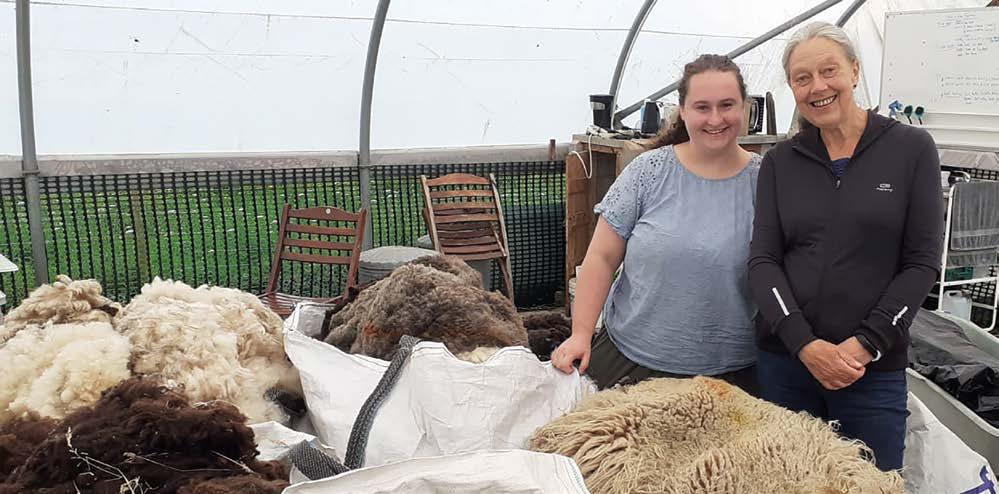

"Our wonderful sheep, cattle and goats are simply everyone’s favourite conservation colleague, and it is wonderful to be able to put the fleeces to good use".
Last summer avian flu devastated the colony of common terns at Seaforth nature reserve. Jenny Bennion finds out what we have been doing to support their recovery and what you can do to help.
Nestled within the industrial hustle and bustle of Liverpool Docks sits Seaforth nature reserve. This freshwater lagoon bordered by grassy and shingle banks is a haven for seabirds, waders, ducks and small birds, all of whom find solace in this special protection area. Whilst all our nature reserves are precious it really feels that without Seaforth many of these birds would simply have nowhere else to go.
Seaforth is home to around one per cent of the UK’s population of common terns, making it a stronghold for these charming birds in northern England. Common terns have one of the longest migrations of any birds completing a whopping round trip of approximately 22,000 miles, arriving in April from their wintering grounds in southern Africa. So even getting to Seaforth is hard work for these elegant, but delightfully noisy, birds.
However, summer 2023 was a tough year for our terns. When avian flu was first detected in wild bird populations at the end of summer 2022, we didn’t see any immediate impact on our tern population. But that all changed within a couple of weeks of the terns returning for last year’s breeding season.
Sadly, we recovered the bodies of 199 adult birds (approximately 50 per cent of the breeding population), with the likelihood that many more died off site. Heartbreakingly this included many birds that had already nested meaning that we only recorded 130 chicks hatch, down 50 per cent from our usual numbers, and unfortunately 50 of these then died.

"Common terns have one of the longest migrations of any birds completing a whopping round trip of approximately 22,000 miles"
Could you help us raise £10,000 to help our terns bounce back after avian flu?
Classified as amber on the conservation status list and with their population showing a decline, we need to do everything that we can to help our terns recover their numbers.
We have been working hard to increase nesting habitat for terns at Seaforth for years, installing a number of tern rafts, floating platforms which are topped with gravel and cockle shells to mimic the natural shingle banks in which terns nest. A tern island was added in 2022 to provide further nesting habitat. Although their nests are actually little more than a shallow scrape, in which three amazingly well camouflaged spotted eggs are laid.
With the threat of another avian flu affected season hanging over our heads, last year we completed work to the causeway which separates the two pools at Seaforth. The aim being to encourage the terns, and all of the other birds that use the site, to spread out more thus reducing the chances of bird-to-bird transmission.
A predator fence has been installed and the once straight banks have been re-profiled with lots more gravel areas added to create the nooks and crannies that are ideal for nesting. So far these have been more favoured by the little ringed plovers, ringed plovers and oystercatchers that also love these habitats.

But there is still more that we need to do to help support the recovery of the tern population in their Seaforth sanctuary. Additional tern rafts are already planned, and we would also love to improve further onshore habitat by removing invasive species and scrub. Finally, the hides and screens at Seaforth are in need of an upgrade so that you, our amazing members, can enjoy this special place.
So far we have been able to allocate £50,000 to Seaforth from the generous donations already made to our Step up for Wildlife appeal, but we’ve done our sums and we need an additional £10,000 to get the job done.
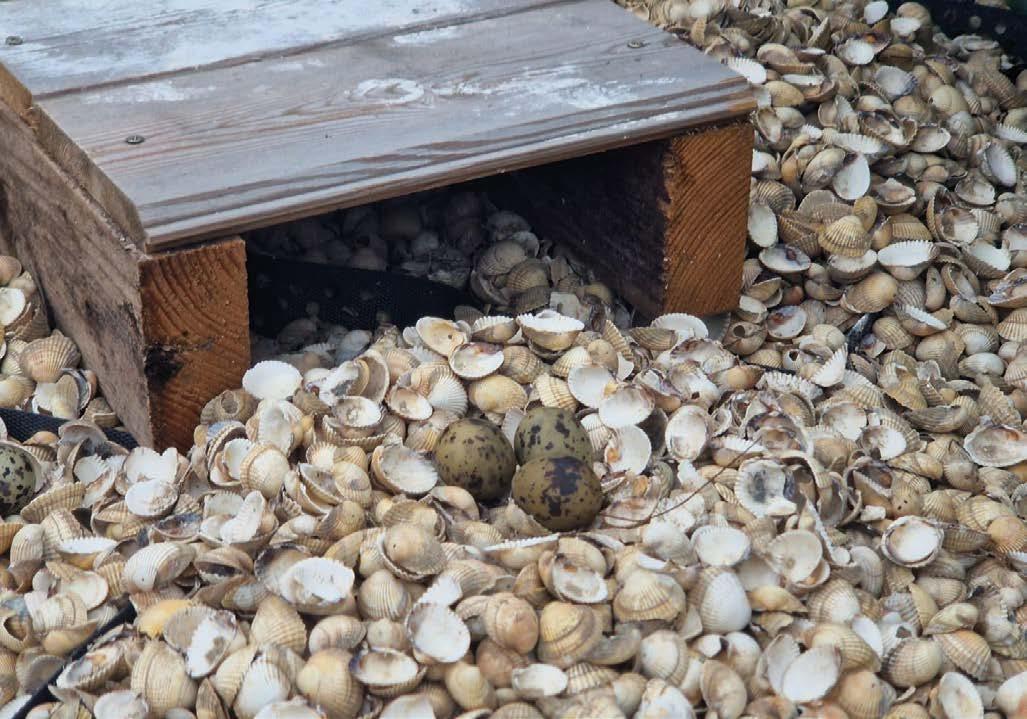
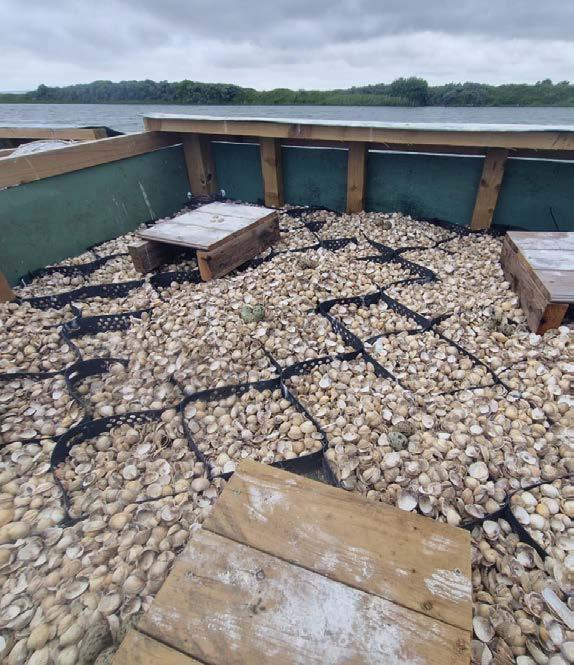
Every penny counts so please either donate at lancswt.org.uk/appeals/ stepping-up or using the Freepost envelope supplied. Thank you.
To visit Seaforth nature reserve you must request a Peel Ports day pass by filling in the form at lancswt.org.uk/nature-reserves/ seaforth-nature-reserve, or Lancashire Wildlife Trust members are able to obtain an annual pass for £35 by emailing ISPS@peelports.co.uk

at MFoN 2024?
You Wildlife Trust teams were prominent again at the Manchester Festival of Nature in Heaton Park. Alan Wright reports from the festival and looks forward to next year.
The rain came in spits and spurts but the crowds never stopped and the band played on at this year's Manchester Festival of Nature.
A lot of our partners were saying that MFoN 2024 just might have been the best of the four live festivals so far, as close to 4,000 visitors piled in between 11am and 4pm. If you judge an event on smiling faces, then it was a 100 per cent success.
A highlight must have been the giant magpie attached to a bike. It was a huge feature in the legendary Pollinator Parade and was the backdrop to some lovely family photographs all afternoon. Who knew people would show so much love for our black and white corvids?

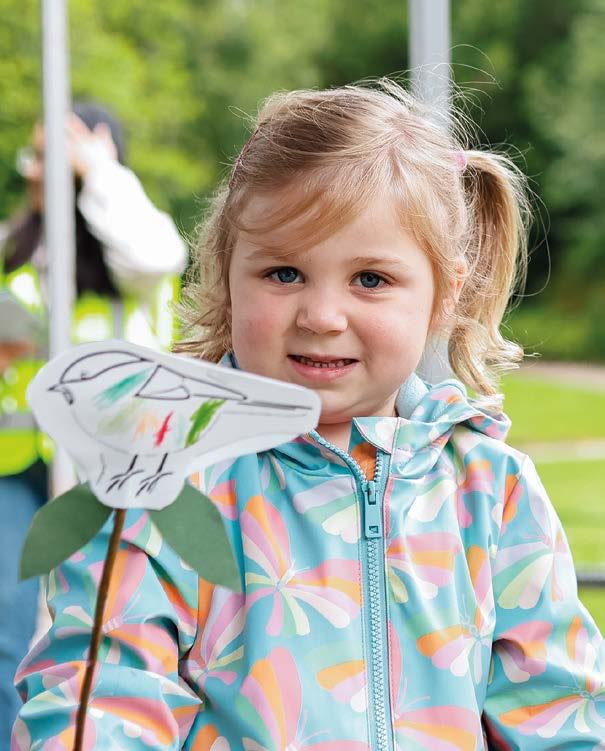
Amy the creator of The Collector could not be with us, but we were grateful it was a star of the show.
Another star arrived with South Lancashire Bat Group, a rescued noctule bat, one of the largest bats in the UK. This beautiful creature drew a crowd around the stall and hopefully raised the profile of the brilliant work done by this dedicated group of people.
Rochdale Field Naturalists helped people to create wildflower posies, while explaining how anyone can get involved in wildlife recording.
"As soon as the stalls were set up we were inundated with visitors, just keen to get involved in the nature activities or chat about the wildlife they have seen."

It is always great to see young people at MFoN and the Manchester Nature Consortium Youth Panel, led by Action for Conservation, were there in force with a number of activities. This panel of youngsters works tirelessly all year round to spread the word about the festival of nature and how important it is to get involved in wildlife locally, nationally and globally.
Around the nearly 20 stalls, people could take part in a pollinator game, make seed bombs, create colourful willow tits and plant seeds in peat-free compost filled newspaper plant pots. There were lots of messages tied into activities that people could take home with them.
Throughout the afternoon the audience was treated to music from the Flat Cap Three band and the Solar DJ. It was great to hear Dirty Old Town by the Pogues, as the park is so close to Salford and that old canal.
The band then lead the legendary Pollinator Parade around the festival. Many people were dressed up (including Spiderman!) or carrying giant flowers – all followed by that amazing magpie.
Our sponsors RRG Toyota brought electric cars to show their commitment to passing Net Zero, hopefully we will all be driving cars like this is in future. >>>

>>> United Utilities spoke about some of the projects where they are creating better habitats for wildlife, including the West Pennine Moors Landscape Recovery Scheme which was launched this year.
The number of projects and dedicated people who are all working to support nature in Manchester and beyond is fantastic, and just so heartening to see. It makes the hard work and sleepless nights worth it.
The Manchester Nature Consortium is now working together as a real team, and we are keen to involve additional partners.
Once we arrive at Heaton Park on an MFoN morning our problems fade away, and a lot of this is to do with the park team, who are wonderful hosts.
If you are interested in taking part in Manchester’s wildest and best nature festival or if you can help us with funding and other in-kind support to make it bigger and better, give me a shout at awright@lancswt.org.uk.
This isn’t just about our partners who work in conservation, it is about everyone who cares about wildlife in Manchester and across the north eest.
"People are so excited when they turn up at Heaton Park and find MFoN. I love listening to their stories about birds in their gardens or a fox they have seen in a local lane. Manchester is packed with wildlife."

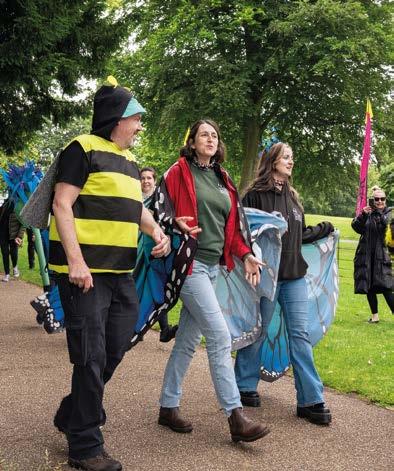


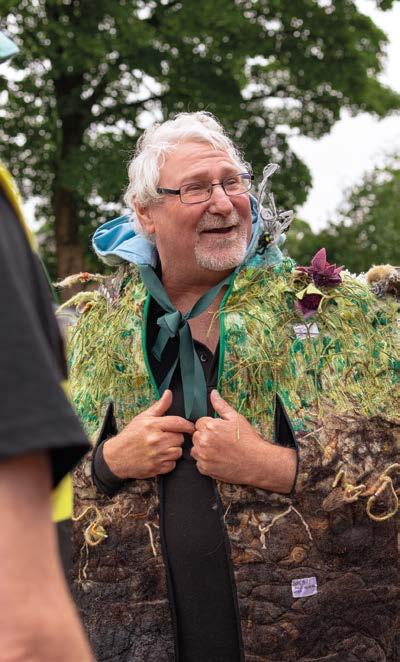



The Manchester Nature Consortium would like to thank our sponsors and supporters, the festival would not happen without you:
• Heaton Park and their lovely staff
• The Flat Cap Three band and Solar DJ
• St John Ambulance
• The Parklife Fund
• RRG Toyota
• United Utilities
• Niche Event Hire
• Standby Productions
• A.J. Critch Wildlife
Stalls on the day included:
• LWT Greater Manchester Team
• The Conservation Volunteers
• Action for ConservationMNC Youth Panel
• Manchester Museum
• National Trust - Lyme
• City of Trees
• Mersey Rivers Trust
• South Lancashire Bat Group
• Sow the City (Growing Manchester)
• Greater Manchester Combined Authority (GMCA)
• Rochdale Field Naturalists
• The National Trust
• Global Shapers Manchester
• Canal & River Trust
• Moors for the Future Bogtastic van
A big thank you to Ben Turner (Walk the Plank), Rachel Webster (Manchester Museum) and Ruth Crawford (TCV) for their work in organising this festival. It was a real shame that Rachel had to miss the festival because of ill health, we couldn’t have done it without her.
Thanks to all the volunteers and most of all to our visitors who, hopefully, will have gone home to share their new knowledge of some the wildlife that is flying, buzzing and tweeting all around them.

It’s not often that I get asked a question as simple and direct as “What’s your favourite summer wildlife, Tom?”
But it is one that’s easy to answer. When I think of the summer, I always think of what is visible lying on my back in the long grass and looking up at the skies.
I cannot think about summer without immediately hearing the screech of swifts. In my mind’s eye I see them scything through a summer evening sky. I can’t describe them anything like as well as legendary poet Ted Hughes; “Their lunatic limber scramming frenzy, and their whirling blades sparkle out into the blue… screaming as if speed-burned”.
A recent edition of Lapwing paid tribute to the wonderful work of Louise Bentley and Bolton and Bury Swifts to keep these birds above our streets. We also need to thank the staff and volunteers at Brockholes - seeing hundreds of swifts feeding above the Visitor Village and Meadow Lake last June is one of my favourite Lancashire Wildlife Trust moments.
"The other summer fliers that really do it for me are moths"
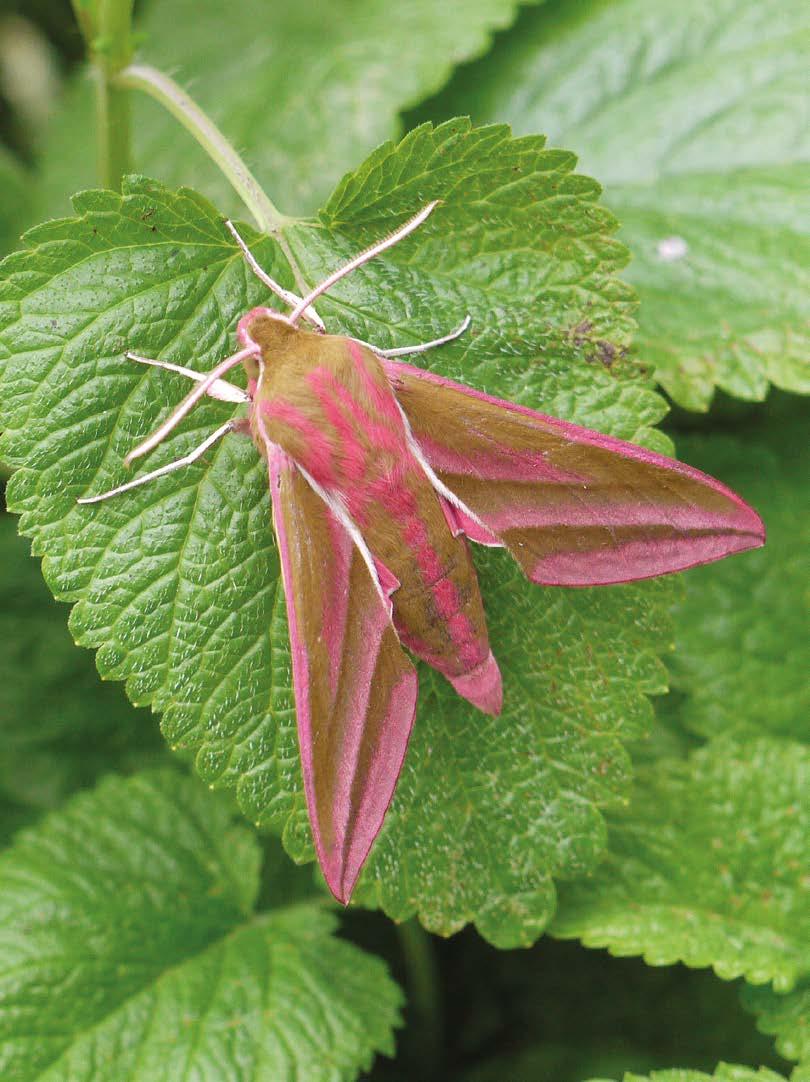
Why not share some of the butterflies, bees and other insects you see in your garden on social media? Don't forget to tag us in They congregated to fill up on juicy aerial insects at their very own equivalent of a motorway service station, after their long journey from Africa and before heading to the eaves, boxes and swift bricks of our town and village homes to breed.
My other favourites are silver-washed fritillary butterflies – their 'go faster stripes’ and pointed wings seem to emphasise their strong head height flight along hedges or woodland rides.
I also love their looping mating dance as they fly around each other, rays of summer sun illuminating their already bright orange markings.
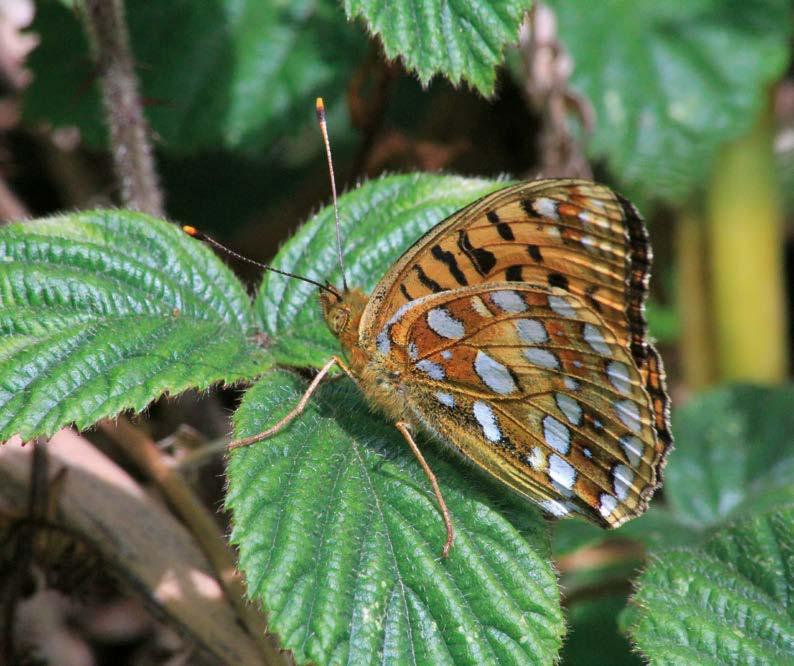

Where I live in North Lancashire limestone country near to Warton Crag, we also have the equally lovely (and slightly misleadingly named) dark green fritillary and high brown butterflies.
The other summer fliers that really do it for me are moths. Sitting out in the garden in fading dimpsy twilight as they come out to my lantern, all fluttery and shimmering and hairy and heavy. If you leave the bathroom window open, they’re perhaps the only wildlife that will visit you when you’re brushing your teeth, or that you could wake up to in the morning on the mirror.
If you are lucky enough to leave a moth trap out, or attend a moth breakfast event, you will be blown away at the sheer numbers, and the range of sizes, colours and textures - you’ll be in your very own TV wildlife documentary.
Elephant hawkmoths are surely one of the wonders of the natural world, but looking at any moth closely invites wonder, mindfulness, and joy. There’s the intricacy and beauty of their wing markings and the pure poetry in their names: dark arches, feathered footman, the geomitrician, blackberry looper, streaked wave, wild cherry sphinx.
There truly is nature for everyone, within touching distance wherever you live, all around us and hidden in plain sight…
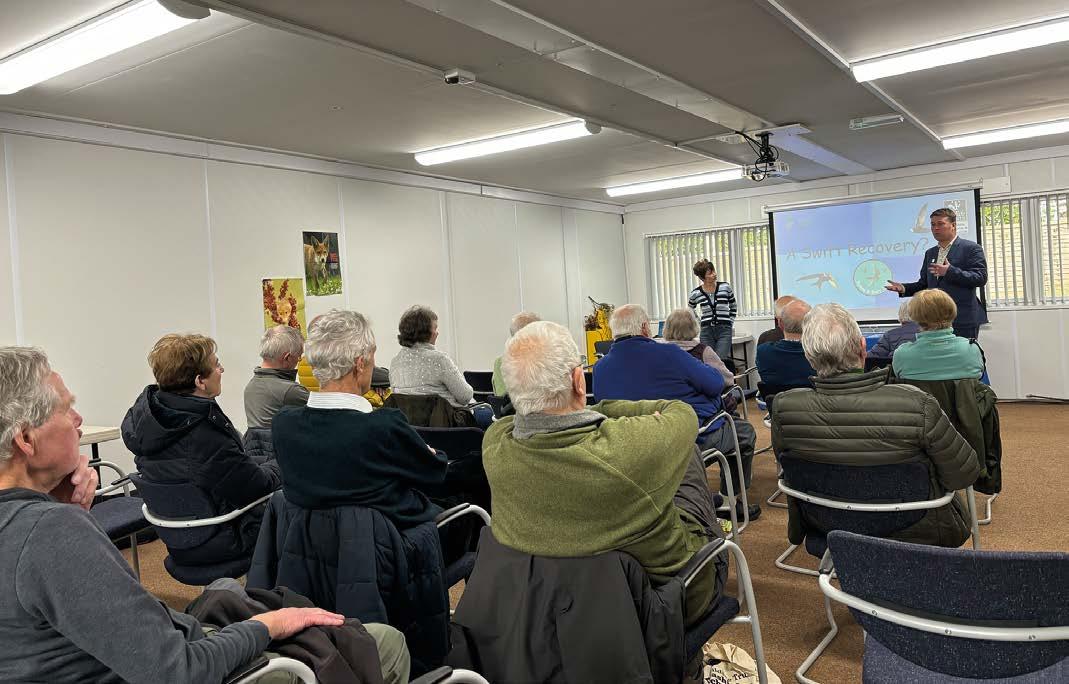
Over the last 60 years, we have been working tirelessly towards our vision of a country with more wildlife, more wild spaces, and more people engaging with nature. But we can only make that happen with the help of people like you. Lucy Coxhead explains more.
In February, we held our latest legacy information event at Mere Sands Wood nature reserve, where our supporters enjoyed passionate talks by Louise Bentley from Bolton & Bury Swifts and our CEO Tom Burditt.
Louise helped us learn how to distinguish a swallow from a swift, and a house martin from a sand martin, shared some joyous tales of rehabilitation successes, and inspired us all to ensure our houses are swift friendly. Tom shared some of the amazing ways legacy gifts have supported our precious wildlife, including creating the bat hibernaculum at Mere Sands Wood.
From just one generous legacy gift, we have transformed a disused bird hide into a bat habitat and are now planning to create more homes for bats across the reserve. It was lovely to see so many familiar faces attend the event; thank you for joining and sharing your stories and memories with us.
A gift in your will is a simple yet powerful way to keep your wishes alive. After you’ve remembered your friends and family, you can help to fund work that will restore habitats and breeding sites for many endangered species including red squirrels, water voles and willow tits. Choosing to leave a gift in your will for wildlife is an amazing way to leave a lasting legacy for something you love and make a difference to future generations of both people and wildlife.
If you are considering leaving a gift for wildlife, or have done so already, we'd be so grateful to hear about your plans. This will not only allow us to thank you in person for your kindness but also gives us added confidence for tomorrow and allows us to plan ahead for longer-term projects.
To discuss leaving a legacy for wildlife, please get in touch with our Fundraising Manager, Lucy Coxhead: lcoxhead@lancswt. org.uk
Find out more about our memory tree at lancswt.org.uk/ support-us/donate/ memory-tree


It was lovely to hear from Tim's family, as they visited Brockholes to pay a visit to their son's memory leaf recently. Tim unfortunately died very suddenly, aged 13, from a brain tumour. His school fundraised for a memory leaf at Brockholes and dedicated it in Tim’s memory because he loved nature.
Tim's family headed out to the reserve early to see the deer and partake in a spot of bird watching, where they managed to spot a blackcap for the first time this year. They spent time amongst nature and the bluebells, a sign of everlasting love, "That's another reason why it's such a special place for us." Thank you to Anna and Ian for sharing their special moments with us.
Our memory leaves are a beautiful way to allow your memories of loved ones to live on through nature. We want to thank the people who have recently chosen to remember their loved ones at our reserves, including the families of:
John Cant
Ian Warburton Mark Tipping
Partnerships Manager, Megan Kelsall , gives us a round-up of the latest news from our wonderful corporate members and supporters.
We are delighted to announce our new gold members, Evans Vanodine. Located just a stone's throw away from the Lancashire Wildlife Trust HQ, our new partners are showing their commitment to wildlife by becoming gold members with us this year.
The family-owned business took the crucial decision to review their carbon footprint in 2019. To focus their effort, and drive improvement, they teamed up with Planet Mark and are now in their fifth year of certification. Planet Mark is a sustainability certification and net-zero provider for organisations and the built environment. Improvements in their practices have so far produced a 35 per cent reduction in the Evans Vanodine carbon footprint and they are committed to further reductions.
Alongside a new five year sustainability strategy, with targets set for various categories such as waste, carbon reduction, plastic and social responsibility, Evans Vanodine has chosen Lancashire Wildlife Trust as one of their charity partners for 2024.
Come and join us this summer
Thank you to all the teams we have welcomed onto our reserves over spring. Groups from all over Lancashire, Manchester and North Merseyside have booked on to our Welly Workout days to get stuck into some hands-on conservation.
Already this year we have seen hundreds of plug plants planted, pathways restored, non-native species removed, and teams of colleagues connecting with nature.
We still have so much work to do and so many wildlife homes to restore, so please get in touch if you would like to book your team day with us this year: business@ lancswt.org.uk
Thank you to our Step up for Wildlife appeal corporate supporters






GOLD
– Beechfields Brands
– Close Brothers
– Eric Wright Group
– Evans Vanodine
– Gresham Office Furniture
– Little Green Feet – JBI Ltd
– Mace
– Northstone
– Places for People
– Planet Shine
– Siemens
– Standby Productions
– Volker Stevin
– VP plc
– Victrex
SILVER
– Decordia Ltd
– Dock10
– Fort Vale Engineering Ltd
– Making Energy Greener
– MJ Wilkinson Plant Hire
BRONZE
– Cavendish Nuclear
– Stowe Family Law
– Valley Mist
– Weinerberger
LOCAL BUSINESS MEMBERS
– Hoofs & Paws
– Moss Wood Caravan Park
– Wild Woolers
– Worthington Sharpe Ltd
Also special thanks to other businesses that have generated income, taken part in Welly Workouts or given in kind materials and help to projects this last quarter: Siemens, Wildlife Travel, Morgan Sindell Construction, Eric Wright Constuction, VercoGlobal, Laing.
At Lancashire Wildlife Trust we believe that business charity partnerships should be mutually beneficial and based on shared values. Our partnerships are bespoke not “one size fits all” packages. It’s important to us that we get things right at the start to make sustainable long-term relationships.
We believe that your company can benefit greatly from a partnership with Lancashire Wildlife Trust as we help your business and your staff to connect more with nature and thrive from the health and well being that happens from connecting with their outdoor environment.

As summer arrives our budding photographers grab their cameras and phones ready to capture the natural world. Alice Wood checks out our latest photography competition winners.
The photography competition continues to be sponsored by in focus, the binoculars specialist, who very kindly offer a £100 voucher as the prize each month.
Based in the Lookout hide at Brockholes Nature Reserve, in focus have a wide selection of binoculars and scopes to help you keep a closer eye on the incredible wildlife we are blessed with on our reserves.
Summer is here again, and we have loved seeing all your incredible wildlife photographs. As the sun finally begins to shine, so does nature, ready for us to look on in awe at its beauty. From butterflies and bees perched on wildflowers, to dragonflies along the water’s edge, there is an abundance of wildlife all around us just waiting to be discovered and shared.
Our photography competition provides the perfect opportunity for you to get out into nature and put your amateur photography skills to the test, to capture your #NatureMoments across Lancashire, Manchester and North Merseyside.
Here are some of the incredible winners from the past few months.
We start our line up with the winner of February’s photography competition, Ian Bonnell, who took home first place with this this beautiful blue tit photo under the theme of ‘ Winter birds’. The way Ian photographed the texture and vibrant colour of this little birds’ fine feathers in such great detail is captivating. We loved how he captured the bird perched with its feet and beak creating a heart, perfect for Valentine’s Day.
'Spring blooms’ was the theme of March’s photography competition and the winner was Paul Gray with his photograph. The way that he timed this shot perfectly to capture this little harvest mouse as it perches atop of the daffodil is incredible. Also, the surprised expression on this fluffy mouse's face is a delight to see.
Spring is such a wonderful time of year for new life and Philip Hill narrowly missed the top spot in March with this perfect little lamb. This spring arrival captured the hearts of our judges, who were impressed with the composition of this image. The way the grass frames the image really makes the lamb the star of the show.
Kath Waterston’s winning image captured April’s theme of ‘It’s a bugs life’ perfectly. From the texture of the bark on the tree to the hibernating ladybirds, we loved how Kath captured the detail, clarity and composition of this whole image. The way she captures these small insects as they burrow into the tree is wonderful and highlights how nature can be found even in the smallest of spaces.
Another fantastic entry from April’s competition was this second-placed image titled ‘ When mum isn’t looking’ taken by Louise Monique Dullaghan The way Louise has captured these little beetles as they follow the leader along the leaf is truly magical. The distinctive technicolour shine of the beetles’ shells really pops against the blurred leaf in the background.
If viewing these incredible images has got you feeling inspired to get out in the natural world and capture some wildlife shots, why not enter our competition? Take a look at this month’s theme and find out how to enter at lancswt.org.uk/photo-comp.
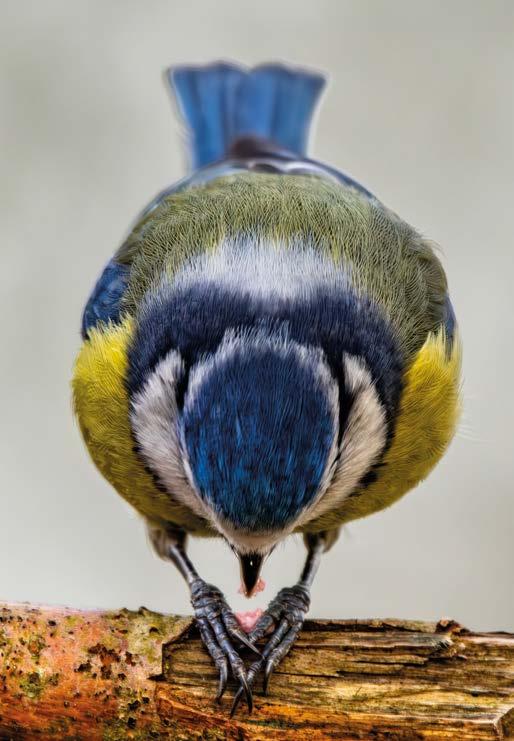



What exactly are wetlands and why are they so vitally important for life on our planet?
Roland Howard investigates.
In simple terms, wetlands are habitats which make life possible. Covering around six per cent of the Earth's land surface, they are biodiverse and essential ecosystems. They are areas of land that are either permanently or seasonally inundated with water, supporting amazing species that are specially adapted to live there.
Wetlands can have a range of different and dynamic characteristics, changing with the seasons and over time. They can be natural or humanmade, temporary or permanent. Wetlands may be freshwater or saltwater and either static or flowing.
More than 80 per cent of all wetlands have disappeared since the 1700s. In a disturbing and accelerating trend, at least 35 per cent of wetlands have been lost since 1970. Moreover, wetland species are increasingly facing the risk of extinction, declining faster than those from other ecosystems.
The significance of wetlands in people’s everyday health, wellbeing and even livelihoods cannot be underestimated. The connection to nature that wetlands provide promotes mindfulness and a sense of emotional balance, contributing to improved mental health.
"Wetlands are fundamental to human life, providing almost all of our freshwater."
Wetlands are fundamental to human life, providing almost all of our freshwater. Their silt-rich soil and wetland plants naturally filter and store water, acting as the planet's kidneys.
Wetlands help us mitigate and adapt to climate change and its impacts, storing more carbon than any other ecosystem on earth.
Nevertheless, most of our wetlands are in extreme jeopardy. Wetlands are being lost three times faster than forests.
Wetlands often provide leisure and recreational opportunities, including fishing and other sporting activities, allowing people to relax and manage stress. The Great Manchester Wetlands Nature Improvement Area is a unique and diverse landscape of water, fen, wet grassland, wet woodland and lowland raised bog. It covers 48,000 hectares, incorporating the wetlands of Wigan, the peatlands of Chat Moss and Risley Moss to the west and southwest of Manchester, and the Mersey wetlands corridor stretching from Rixton to Warrington.
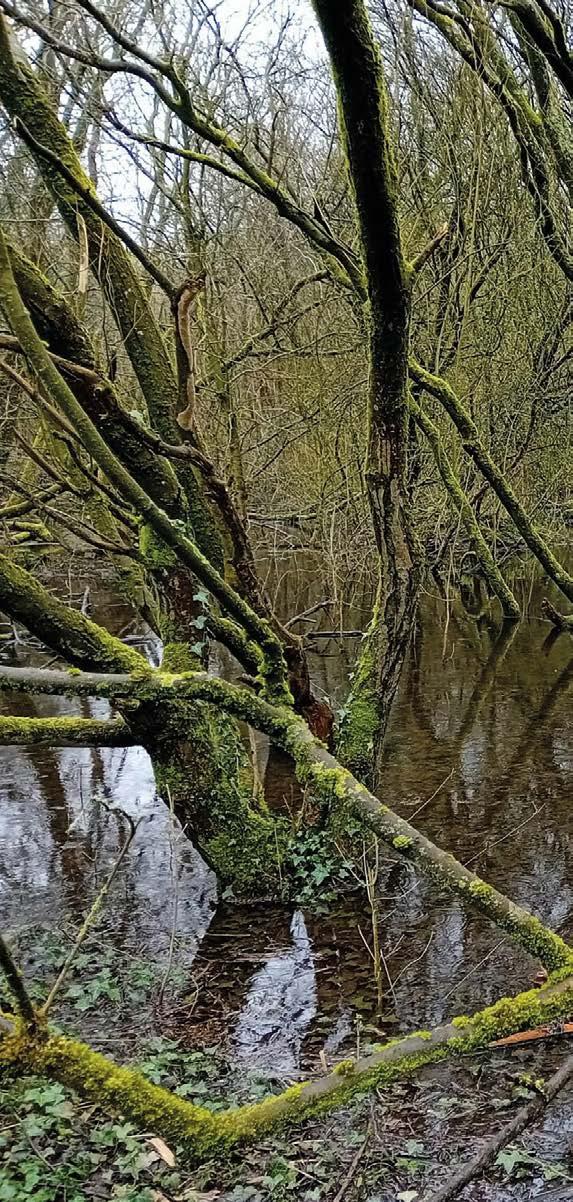

At the heart of the improvement area is the Flashes of Wigan and Leigh, a National Nature Reserve initially formed from mining subsidence and flooding.
Following an incredible transformation over several decades, it now supports a rich diversity of birds and other species including bitterns, willow tits, water voles and great crested newts.


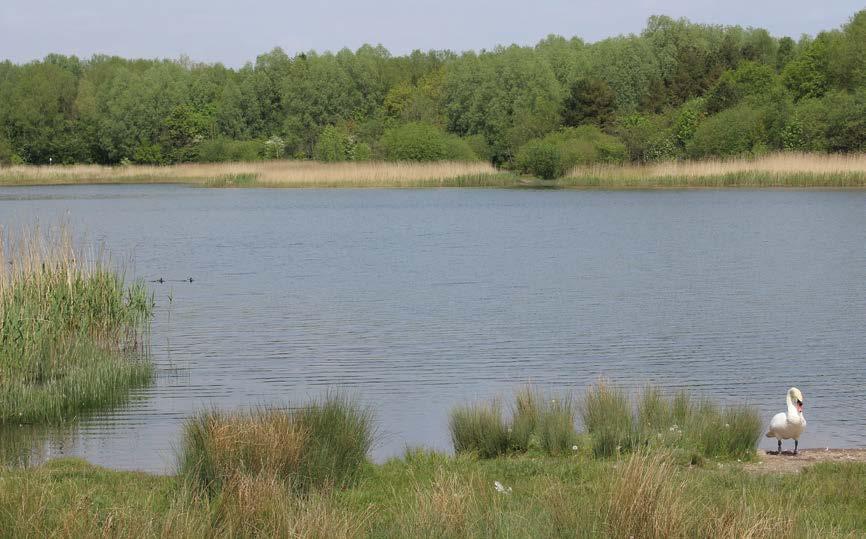
The Great Manchester Wetlands Partnership was formed in 2011 to deliver a landscape-scale natural heritage and community vision.
Bringing together experts from over 20 organisations, the partnership works together for nature by creating, restoring and connecting habitats, reintroducing lost species and engaging local communities with the wonderful wetland world on their doorstep.
Jo Kennedy, our Head of Landscape Nature Recovery & Great Manchester Wetlands Partnership Co-ordinator, says: “Restoring the network of wetlands through the partnership is key to enhancing biodiversity and providing nature-based solutions, alongside health-boosting recreational opportunities across the whole area. Taking positive actions for wetlands today will help protect our wellbeing tomorrow.”
"The connection to nature that wetlands provide promotes mindfulness and a sense of emotional balance, contributing to improved mental health."
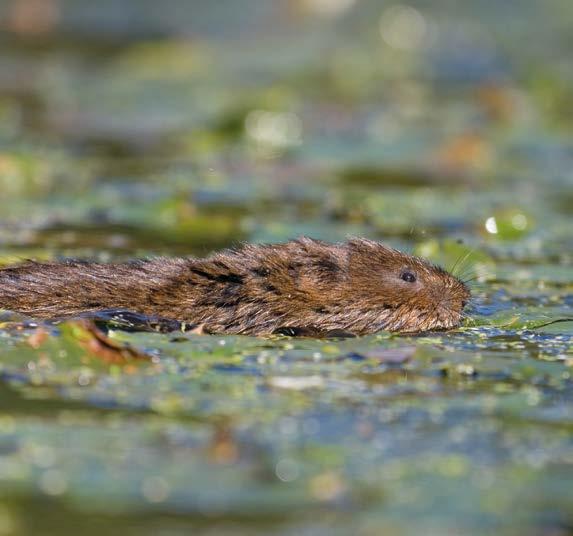
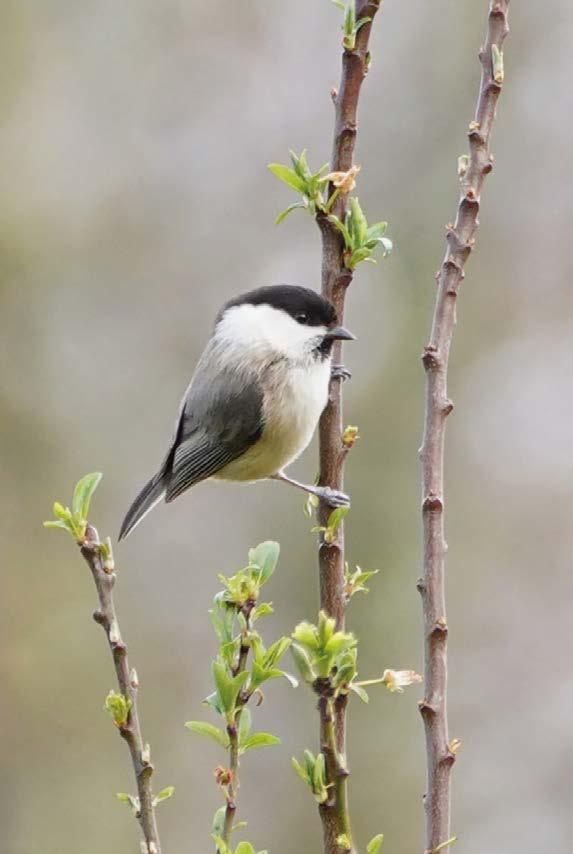

This summer sees Lancashire Wildlife Trust saying goodbye to two of our longest serving and most loved team members, Director of Conservation, Tim Mitcham, and Director of Marketing, Lindsey Shaw.
Tim Mitcham started working at your Wildlife Trust back in 1989 and over the past 35 years has helped to shape the Trust into the formidable force for nature it has become. Tim is retiring and aims to spend his time getting stuck into lots of conservation volunteering.
“I have seen so much change in my time with the Trust. Back when I started, we only had five or six core staff and around 3,000 members –but our ethos was always the same, to strive to stop the decline of wildlife in Lancashire.
“I have been so privileged to have this amazing career. I’ve been asked to think of my proudest moment, and I really can’t single out just one. Helping to stop peat extraction on Chat Moss in Greater Manchester and seeing the restoration of our peatlands has to be one.
Also contributing to the Wildlife of Lancashire book, the first comprehensive guide in over 100 years and still a vital resource.

"I have met so many passionate and dedicated staff members and volunteers during my time at the Trust, so many people working their socks off every day to create a better future for us and for our wildlife. It’s been incredibly inspiring and humbling."
Both of these feel like a real legacy, but really every day is my proudest moment, working with our wonderful, dedicated and passionate staff and volunteers. And it is those staff and volunteers that I will miss most.
“Although sometimes when I read the headlines and think about the state of our environment it’s hard not to feel a little dispirited. Not long after I started working for the Trust was the first Earth Summit in 1992 in Rio. What could we have achieved if we had built on the momentum from that summit to really put a halt to climate change and wildlife loss?
“However, I feel proud that I may have played even a small part in helping to slow those losses downand I know that I am leaving Lancashire Wildlife Trust as a force for good for the wildlife, on our doorsteps and beyond.”
Lindsey Shaw joined Lancashire Wildlife Trust as our first ever Marketing Officer in 2008, and over the last 16 years has created a thriving and exciting Marketing team, shouting loudly for nature. Lindsey is leaving to take on a new challenge at The University of Central Lancashire.

"Back when I started, we only had five or six core staff and around 3,000 members – but our ethos was always the same, to strive to stop the decline of wildlife in Lancashire."
“I have met so many passionate and dedicated staff members and volunteers during my time at the Trust, so many people working their socks off every day to create a better future for us and for our wildlife. It’s been incredibly inspiring and humbling.
“It’s really difficult to pick out just a few highlights of my time, but one has to be the launch of Brockholes nature reserve – my first task when joining the Trust. Brockholes is such a key place for connecting people with nature and wildlife and has really helped to put the Trust on the map with a much wider audience – more voices for nature, more people engaged with nature, and more people interested in the work of LWT.
“Our MyPlace project will always be close to my heart too. It is simply inspirational, and it has been a real privilege to see the life-changing impact this work has had on so many individuals. Our nature and wellbeing work has grown from strength to strength since then, and thousands of lives have been changed for the better as a result.
“Please keep supporting Lancashire Wildlife Trust. It is an organisation brimming with passionate and dedicated staff and volunteers taking action for nature every day. I for one will forever be supporting and cheering them on from the sidelines.”.
Thank you so much Tim and Lindsey for the years of hard work, passion and dedication that you have committed to Lancashire Wildlife Trust – we simply couldn’t have done it without you.
Anna-Maria White explains how we can all make a difference for nature every day.
We hope that you’ve all enjoyed the challenge and excitement of doing one wild thing every day throughout 30 Days Wild in June, engaging with the many activities on offer to bring you closer to the wonders of nature and wildlife.
However, you may be wondering what you can do next to continue the momentum and your own journey in taking action for nature.
But what does taking action for nature really mean? In essence, it means actively choosing to undertake action of any kind that directly, or indirectly, benefits nature or wildlife. This could be simple things such as deciding to put out feeders for birds or supporting a local petition to protect a patch of land for wildlife in your area.
You may decide to not cut all or part of your lawn to allow for wild and common flowers to thrive for insects, or perhaps you are planning to fundraise for a nature-based cause, species or event.
Encouraging actions outside of your home, such as in your place of work or at school can be a great way to help others better understand the motivation to protect our natural world.
Taking care of our environment, also helps us to take care of ourselves, getting some fresh air and exercise, the very act of doing something good for wildlife can make us feel more connected to nature.
Whatever you choose to do, however often you choose to do it - every action counts towards a greater collective outcome in helping to support wildlife and nature where you live. Especially at a time when wildlife and nature need us more than ever.
With an array of different actions to choose from that can be adapted and tailored to suit all abilities and ages, here are some ideas to help you continue taking action for nature at home, at work, and in your communities.
"Whatever you choose to do, however often you choose to do it - every action counts towards a greater collective outcome in helping to support wildlife and nature where you live."
Could you take action for nature by supporting our Step up for Wildlife appeal? We’re aiming to raise £300,000 to make a real difference for nature on our doorsteps.

Visiting new nature reserves
Challenge yourself to get out and about and immerse yourself in nature by visiting and exploring some of our amazing nature reserves, such as Foxhill Bank in Oswaldtwistle, Heysham Moss or Longworth Clough near Bolton.
Walking is a great way to stay active for health and wellbeing, and you never know what might be waiting for you around the next corner of a previously unexplored one of our nature reserves.



vegetableJuly/Augustplanting list
Rocket, Turnips, Chard, Spinach
July/Augustpickingvegetable list
Keeping feeders topped up is great for wildlife, but it’s also important to ensure that wildlife feeders and tables are cleaned regularly to help reduce infection and disease among our garden visitors. It’s easy and quick to do and will encourage wildlife to your garden or green spaces.
You can find more information on our website by searching ‘How to clean nestboxes and bird feeders’.
Tomatoes, Courgettes, Onions, Cucumbers
Seasonal picking and planting
Accessing seasonal food varieties is a great way to work in harmony with nature. There’s still lots of veggies that you can plant in summer, whether it’s in pots or planters at home or in your local community garden or allotment.
Taking action for nature may mean different things to different people, but if we all work together to make what might seem like small changes, we could make a big difference to the future of our environment.
Enjoy the great outdoors at one of our fun-filled events this summer. Embrace wildlife and explore the untamed beauty of our nature reserves by taking part in one of our fabulous events.
We have an experience for everyone, from educational guided walks to immersive bat adventures.
Take part in a walk led by one of our knowledgeable guides and embark on a journey of exploration. Discover enchanting trails, diverse wildlife and hidden treasures along the way. During the summer season we have various walks scheduled including pram walks, reserve tours and wildflower trails. These walks will occur at different locations throughout our region including Brockholes, Lunt Meadows, Heysham and Mere Sands Wood nature reserves.
The Fylde Sand Dunes Project works hard to encourage visitors to the dunes in a way which does not further threaten their existence, whilst letting people know all about the amazing wildlife that lives in this special place. Take part in beach art, rock pool exploration, plus much more this summer!
Don’t miss the chance to take part in one of our upcoming events. Embrace the tranquility of nature, learn from passionate experts and foster a deeper connection with our reserves. Nature is calling –are you ready to answer?
Come and experience the delightful Brockholes Artisan Markets. Situated on our unique floating visitor village, the markets feature a variety of businesses from across the north west. Explore numerous stalls offering gift ideas and delectable food and drinks, accessible walking trails, and a wealth of wildlife. There’s no better place to be!
Take part in our guided Lancashire Local History Walk this summer at Brockholes. Uncover intriguing tales of the Lancashire witches and Cromwell's presence in the area. Don't miss out on this fascinating fact-filled journey.
Don't be left in the dark - join Brockholes Reserve Officer Lorna at one of our super popular Bat Walks. Discover the mysterious world of bats and the technology used to detect them. Spaces fill up fast, so book now to secure your spot.
Join one of the captivating Nature Tots sessions led by our Education Team, designed to ignite a passion for the outdoors in your little adventurers. Enjoy the company of wildlife and cultivate a lifelong bond with nature. These marvelous sessions take place at Brockholes, Mere Sands Wood, and Heysham Nature Reserves.
Learn about life in the Stone Age and connect with the past at our prehistoricthemed events at Lunt Meadows. With workshops on art and foraging, and experimental archaeology activities, there are opportunities for all ages to get involved.
Hear an exciting talk by local astrophotographer, Lee Hunt, at our Skies and Pies event. Experience a virtual journey through the night skies of Lancashire, from our planetary neighbours to distant galaxies, followed by a delicious pie supper. What could be better than planets and pies?
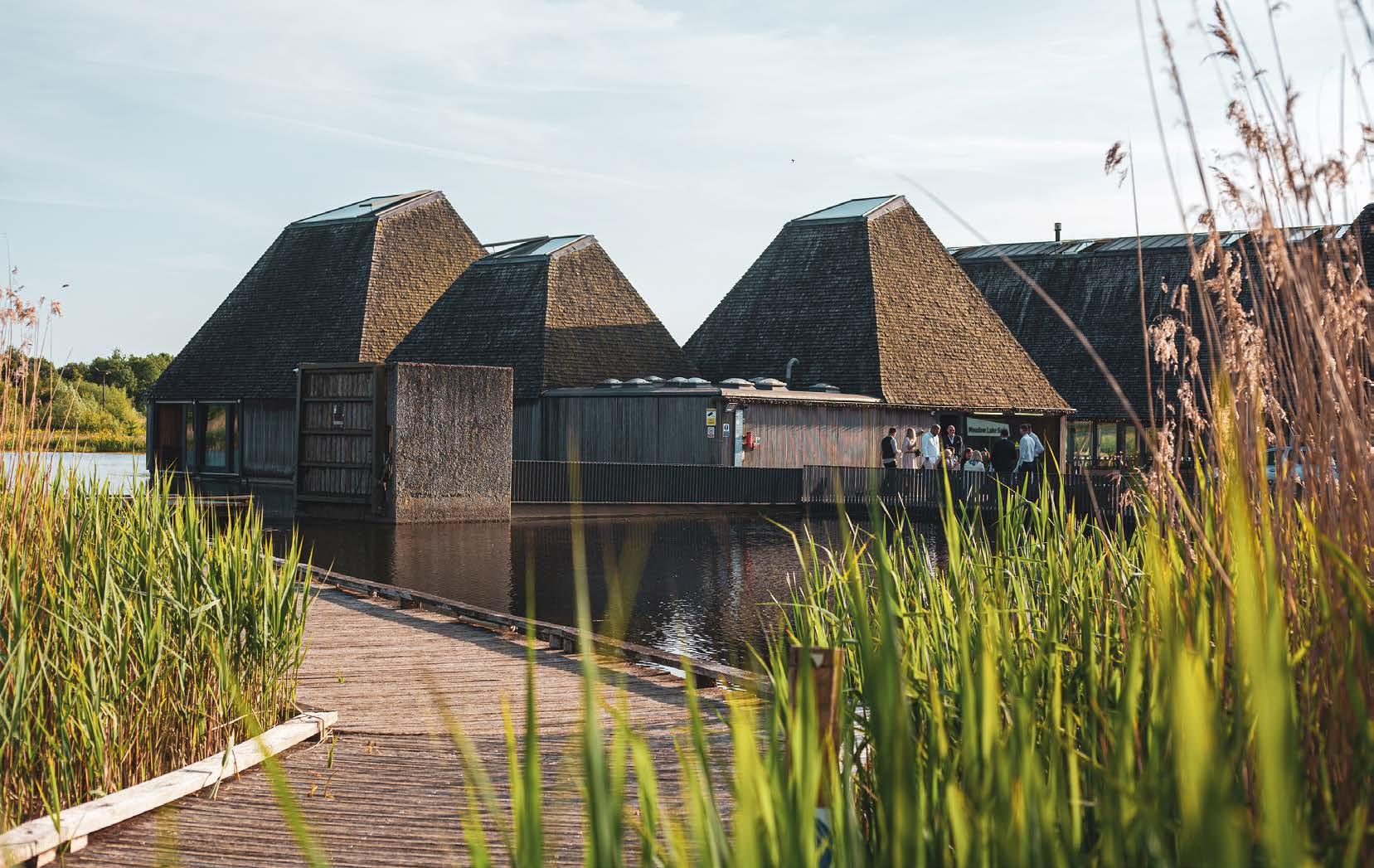
Get outside and enjoy one of our outdoor theatre performances this summer. Choose from Shakespeare’s As You Like It performed at Brockholes, or Quentin Blake’s Angelica Sprocket's Pockets performed at both Brockholes and The Hive.
Scan the QR code or head to lancswt.org.uk/events to find out more and book your tickets.


